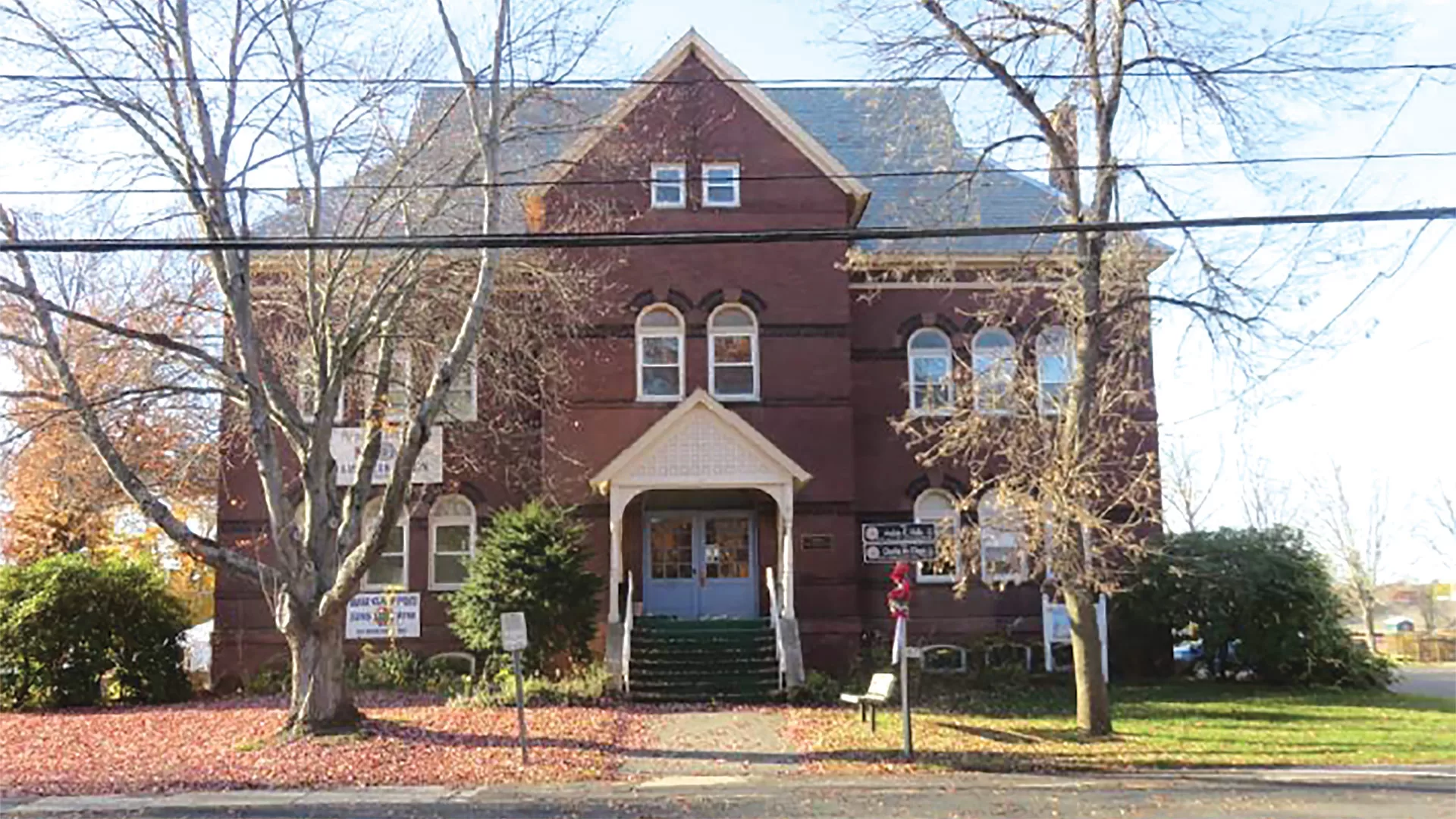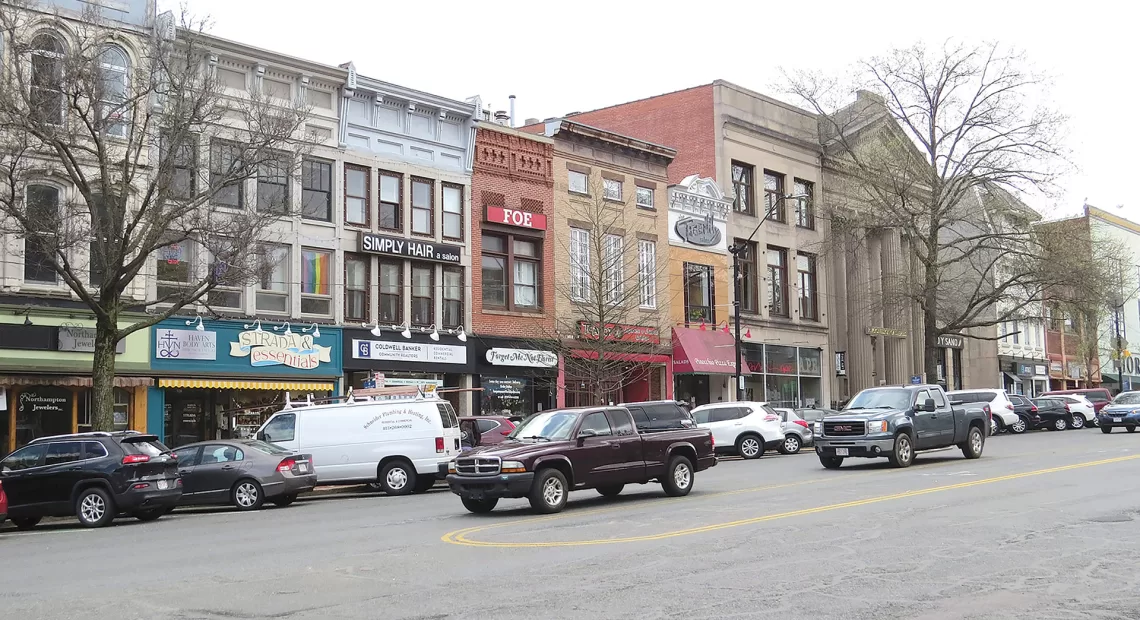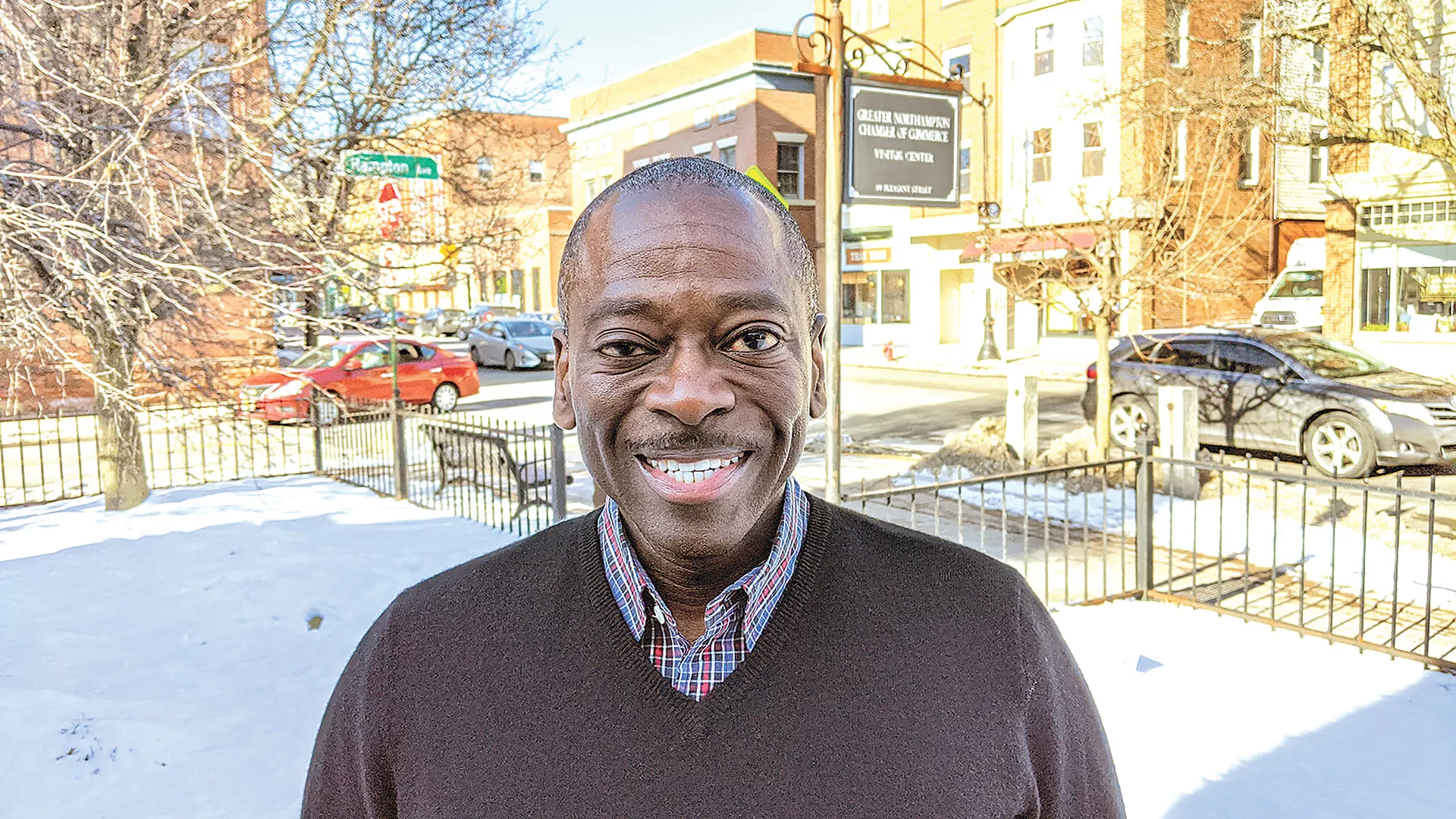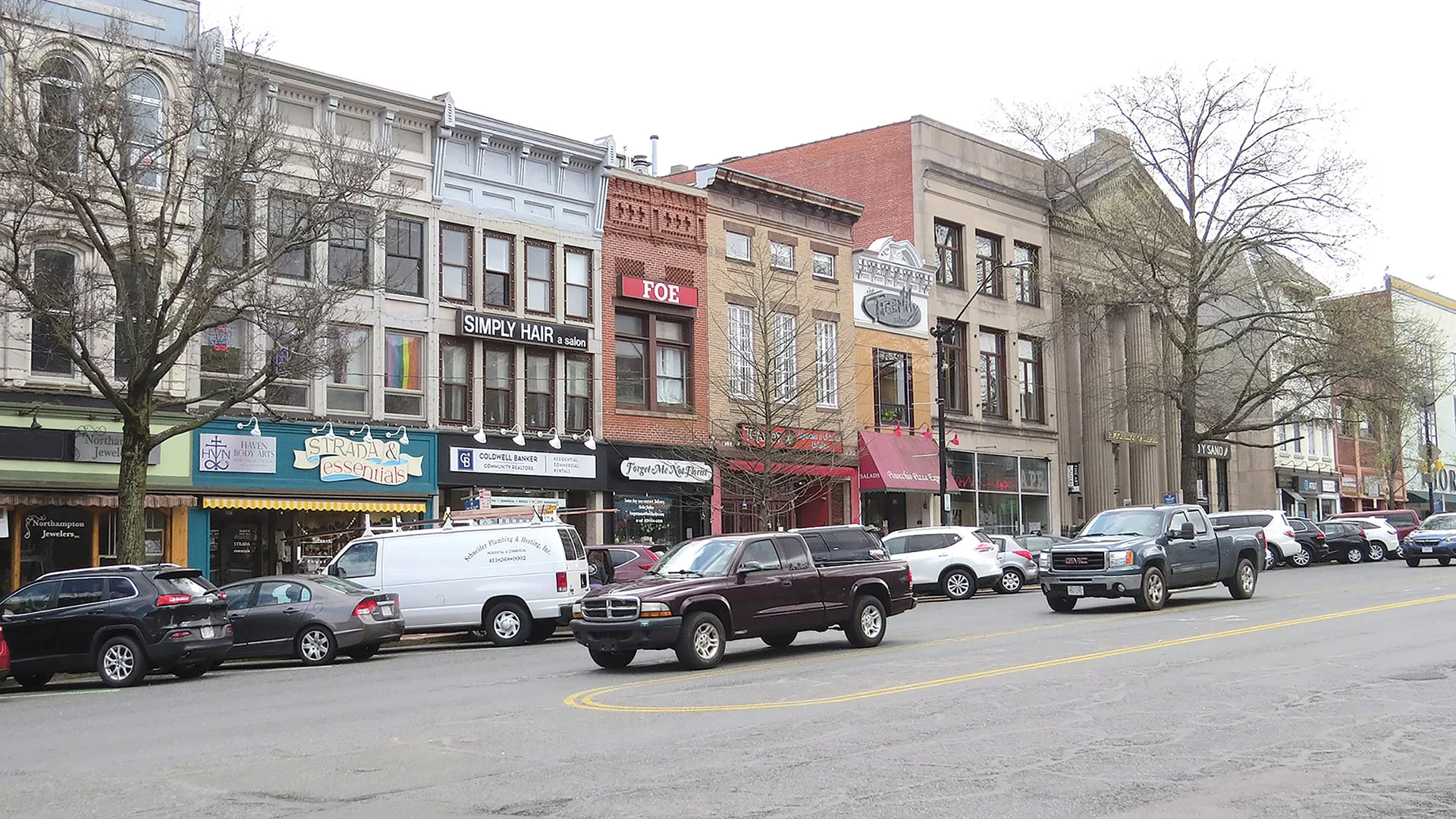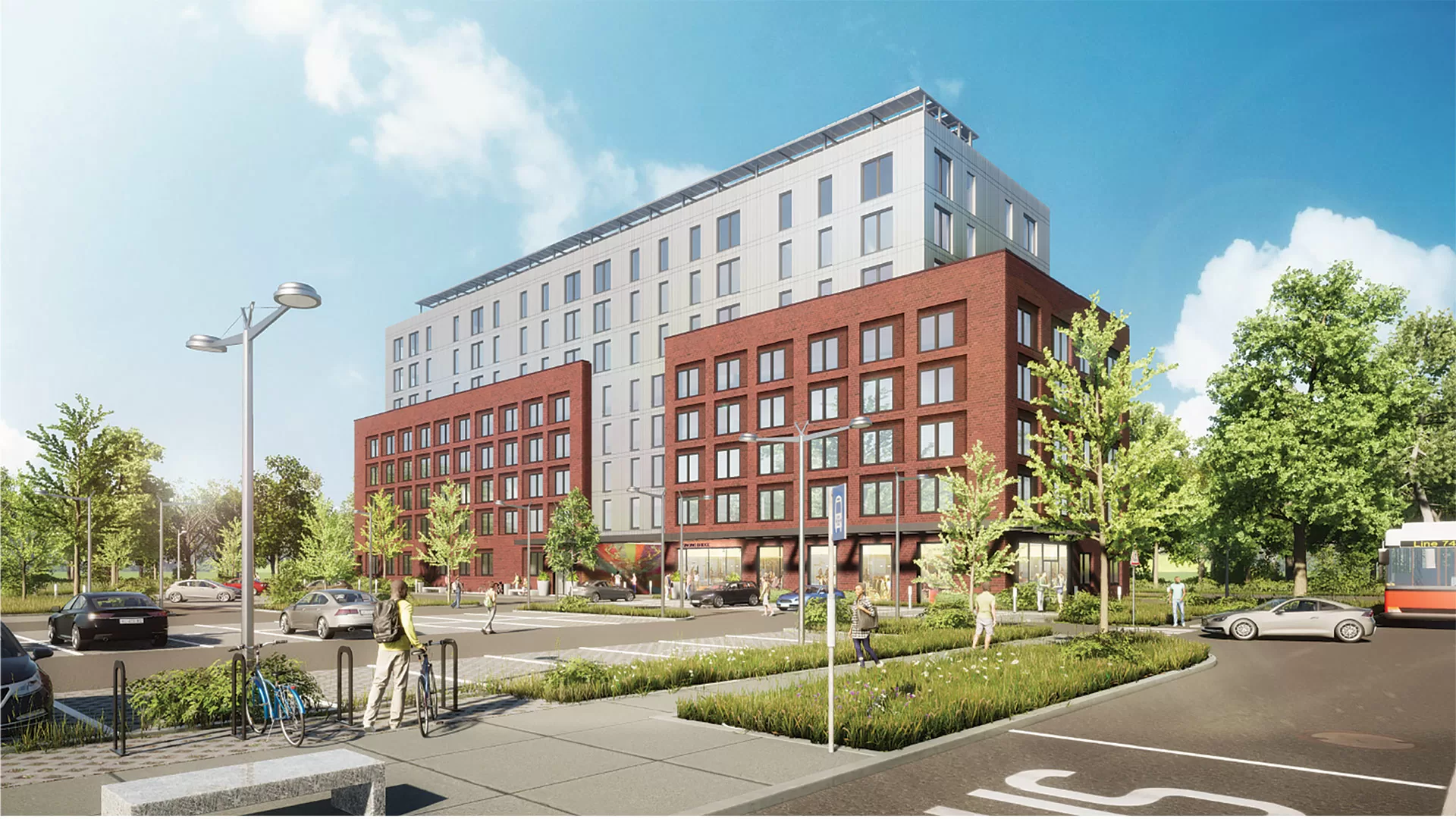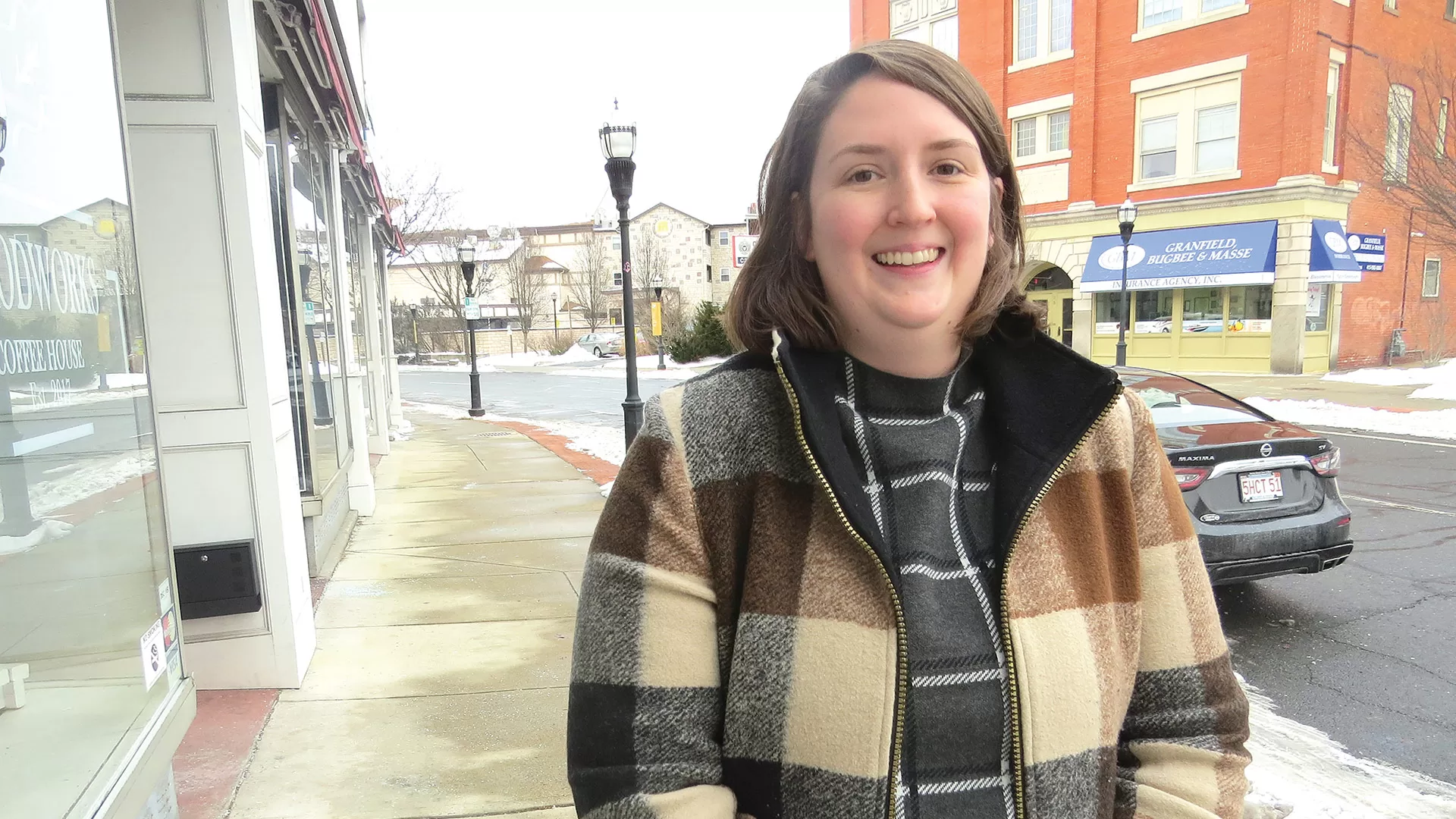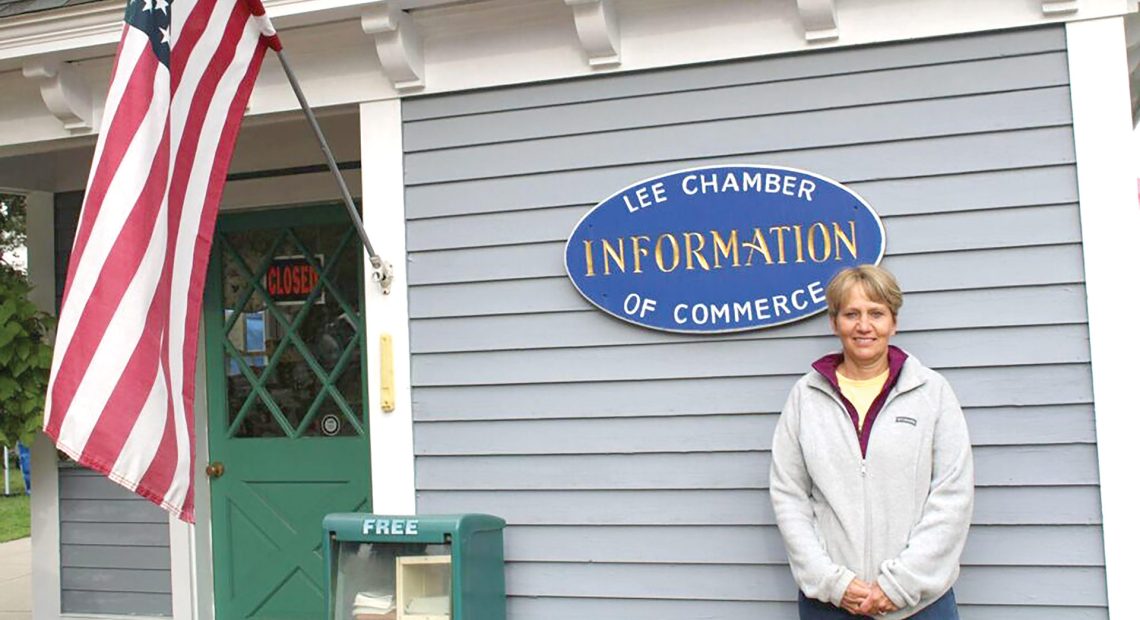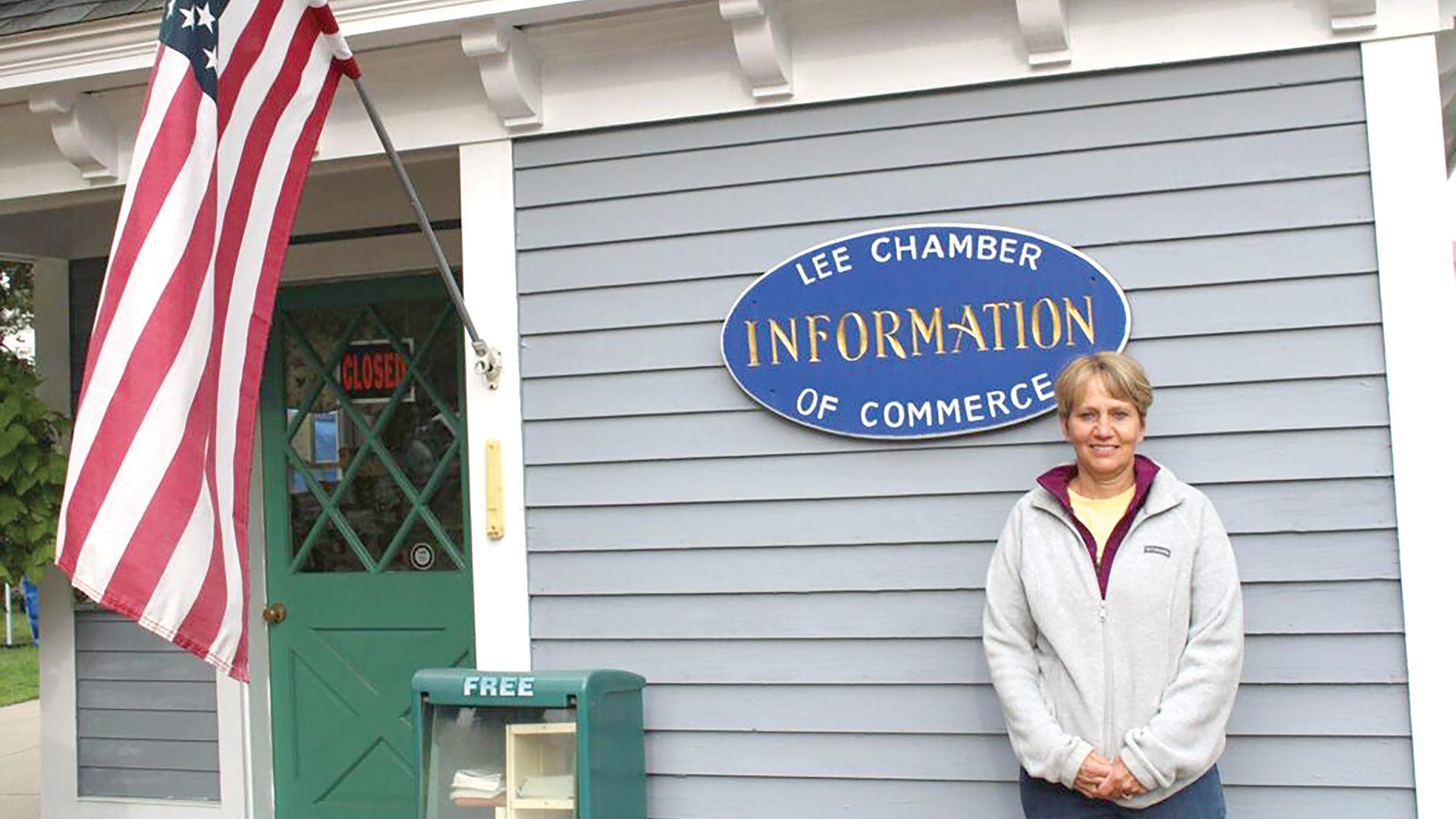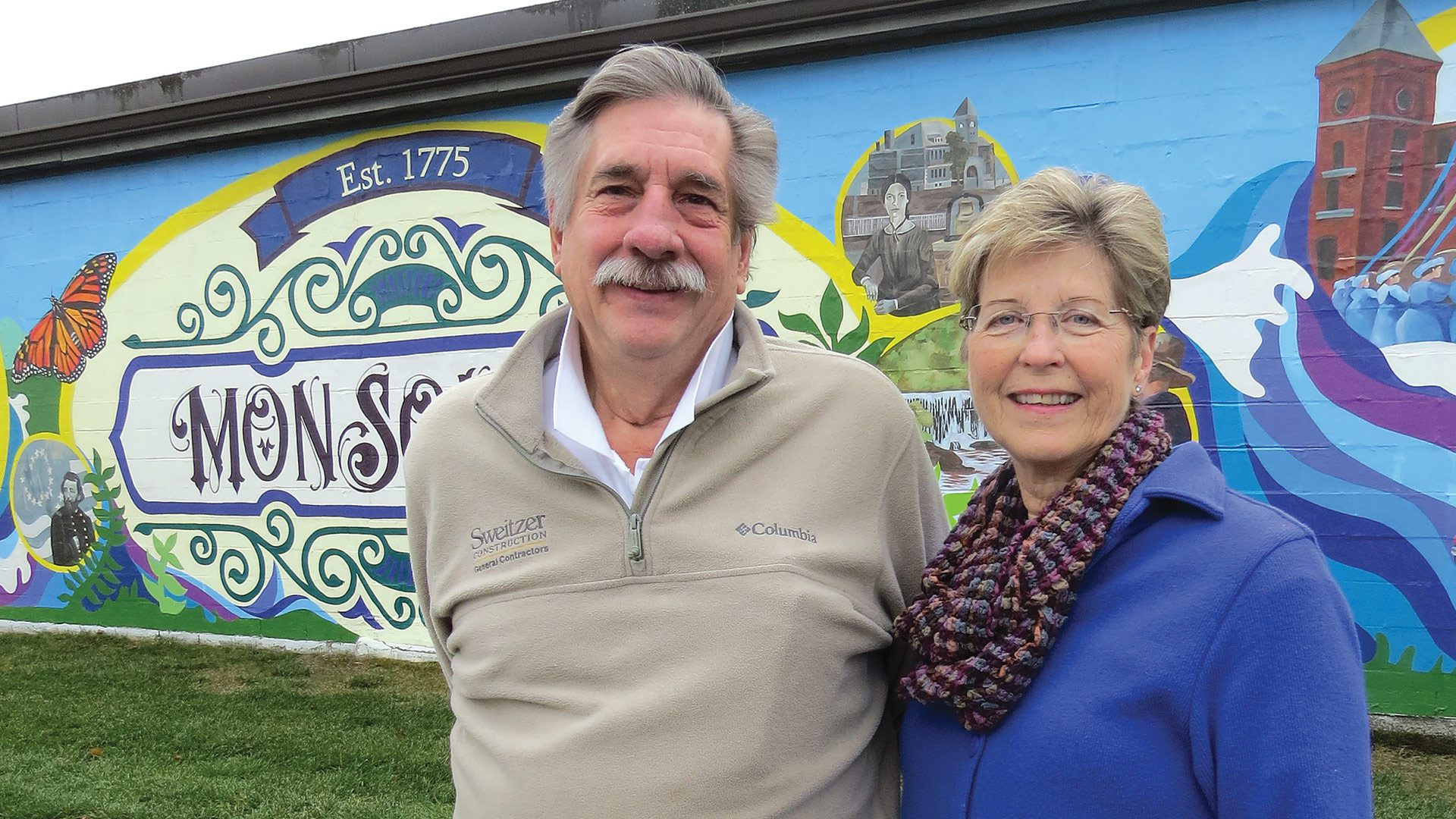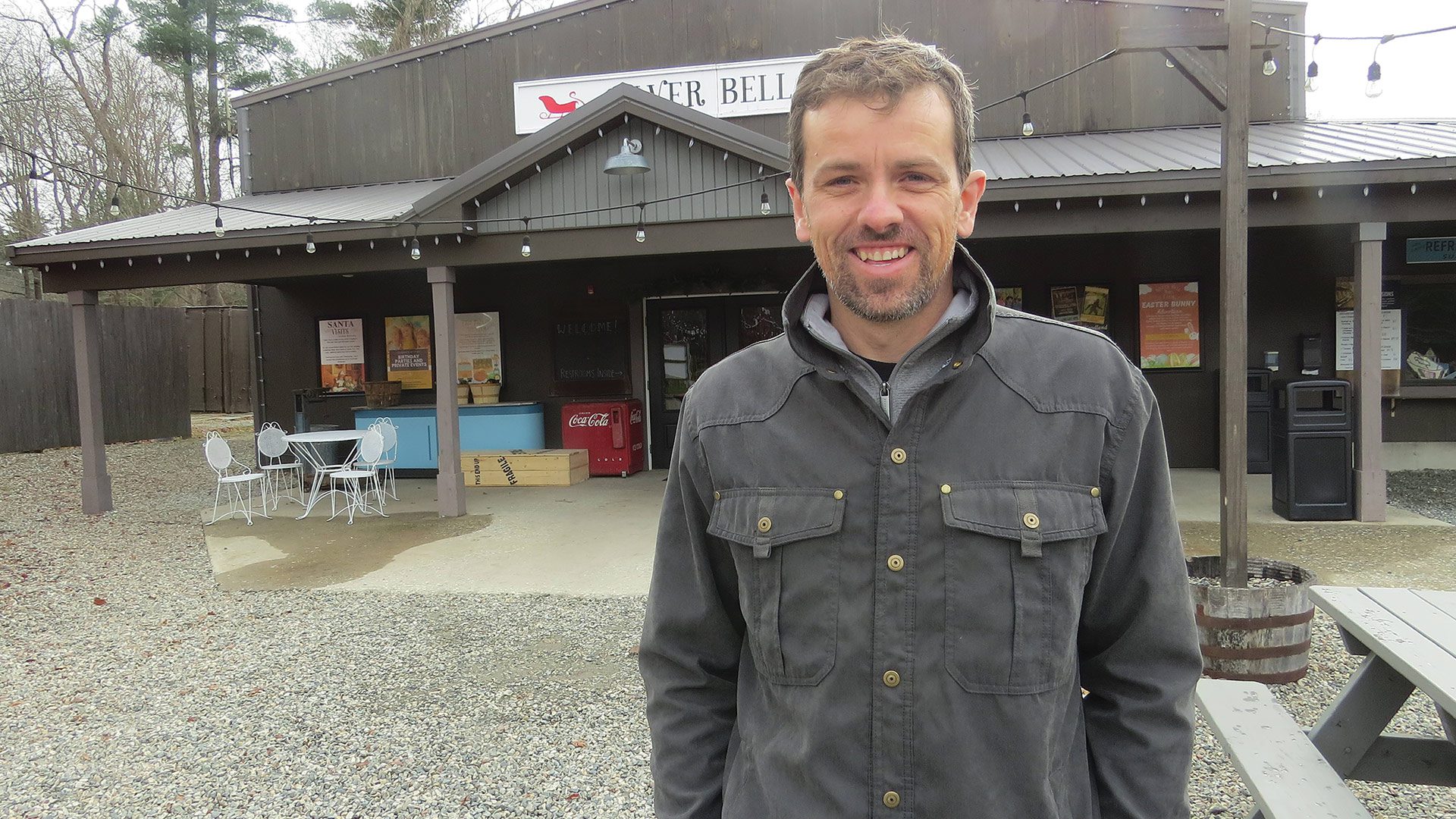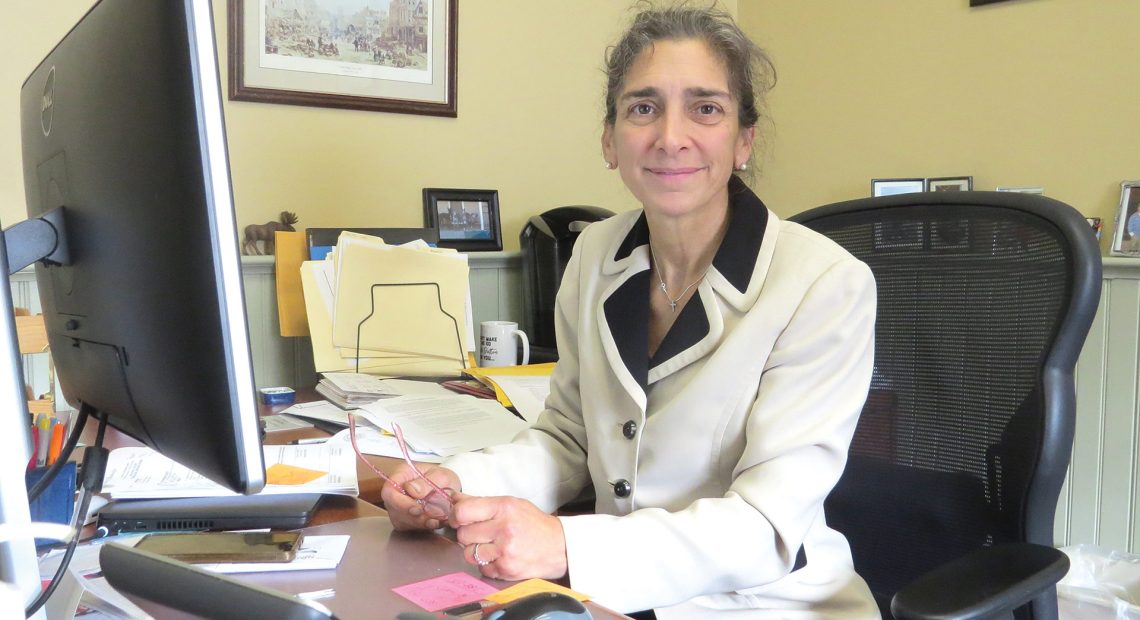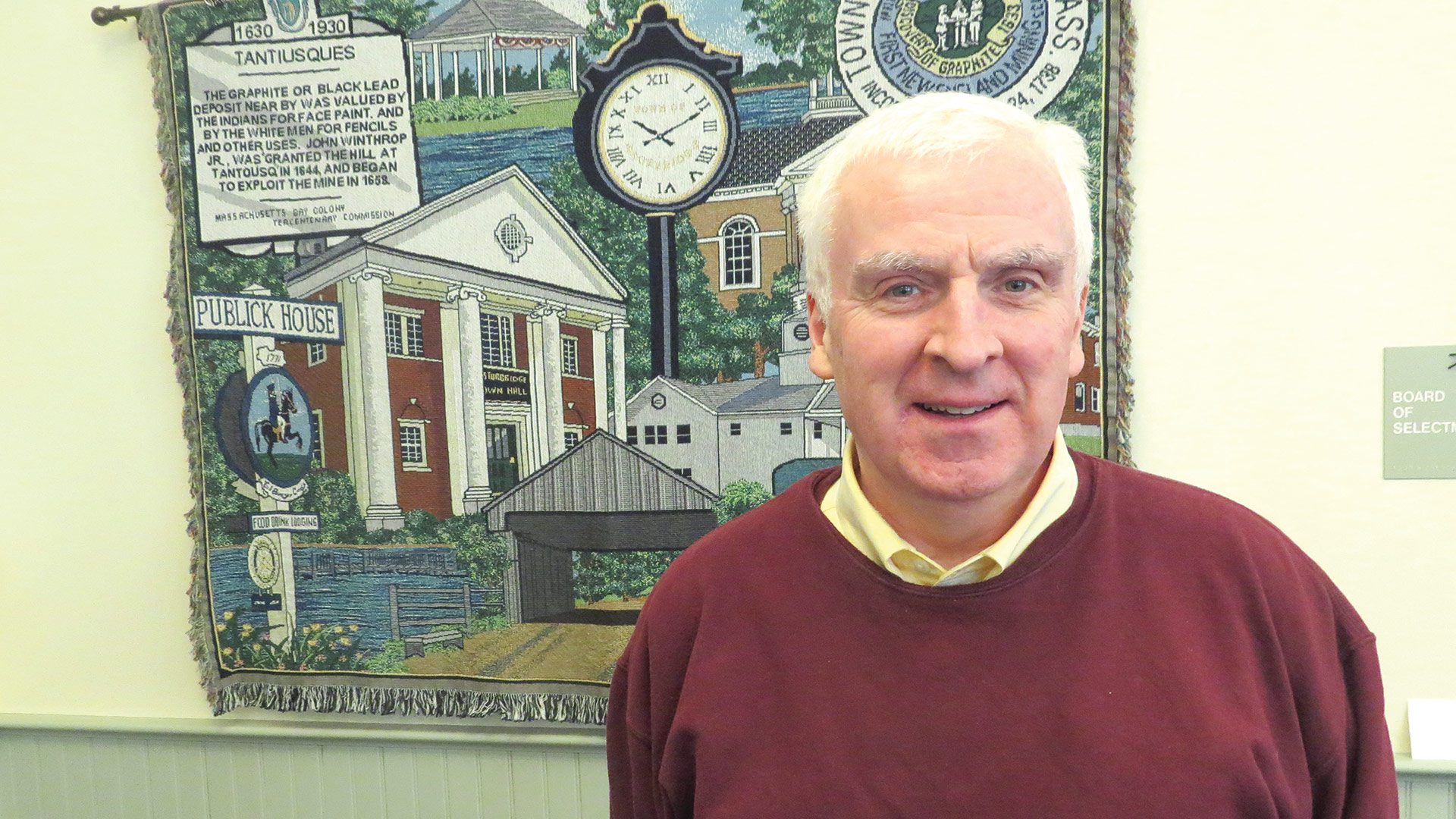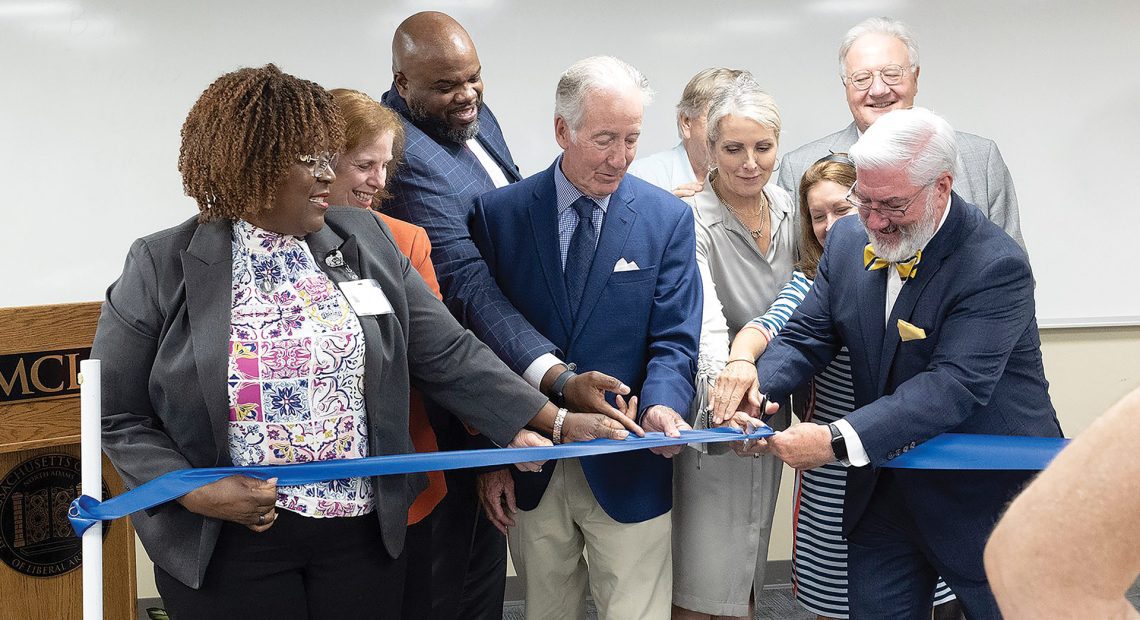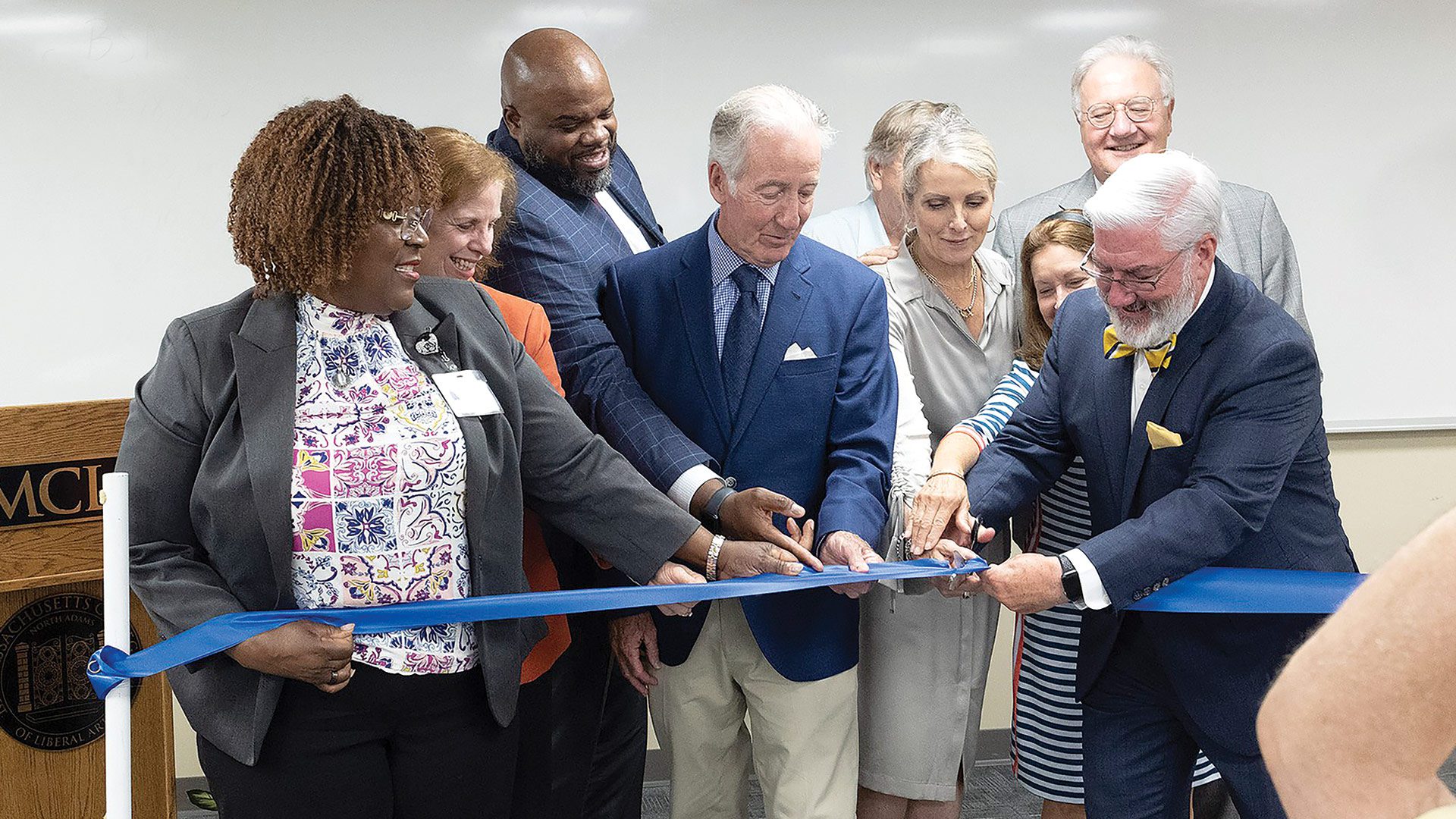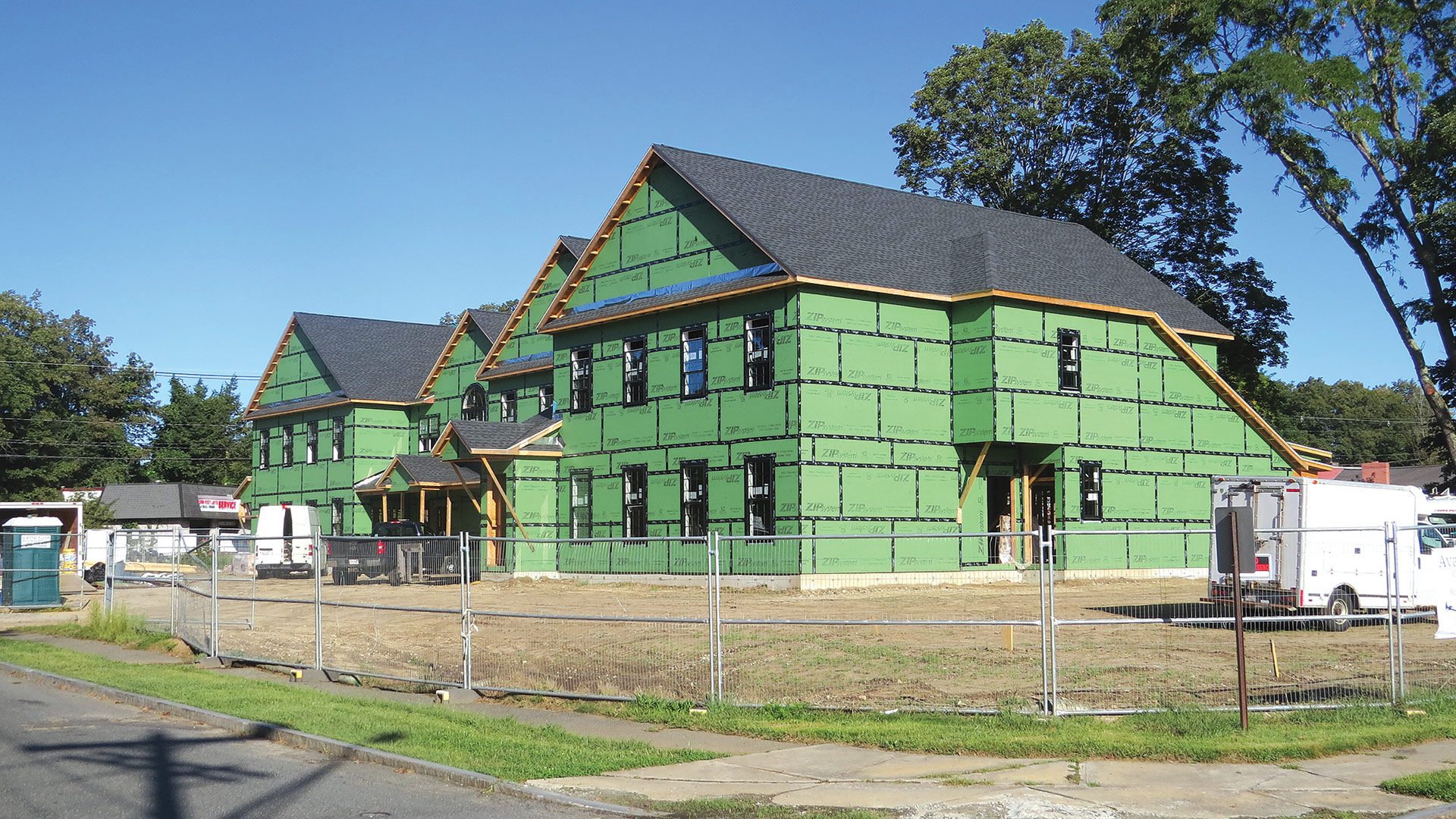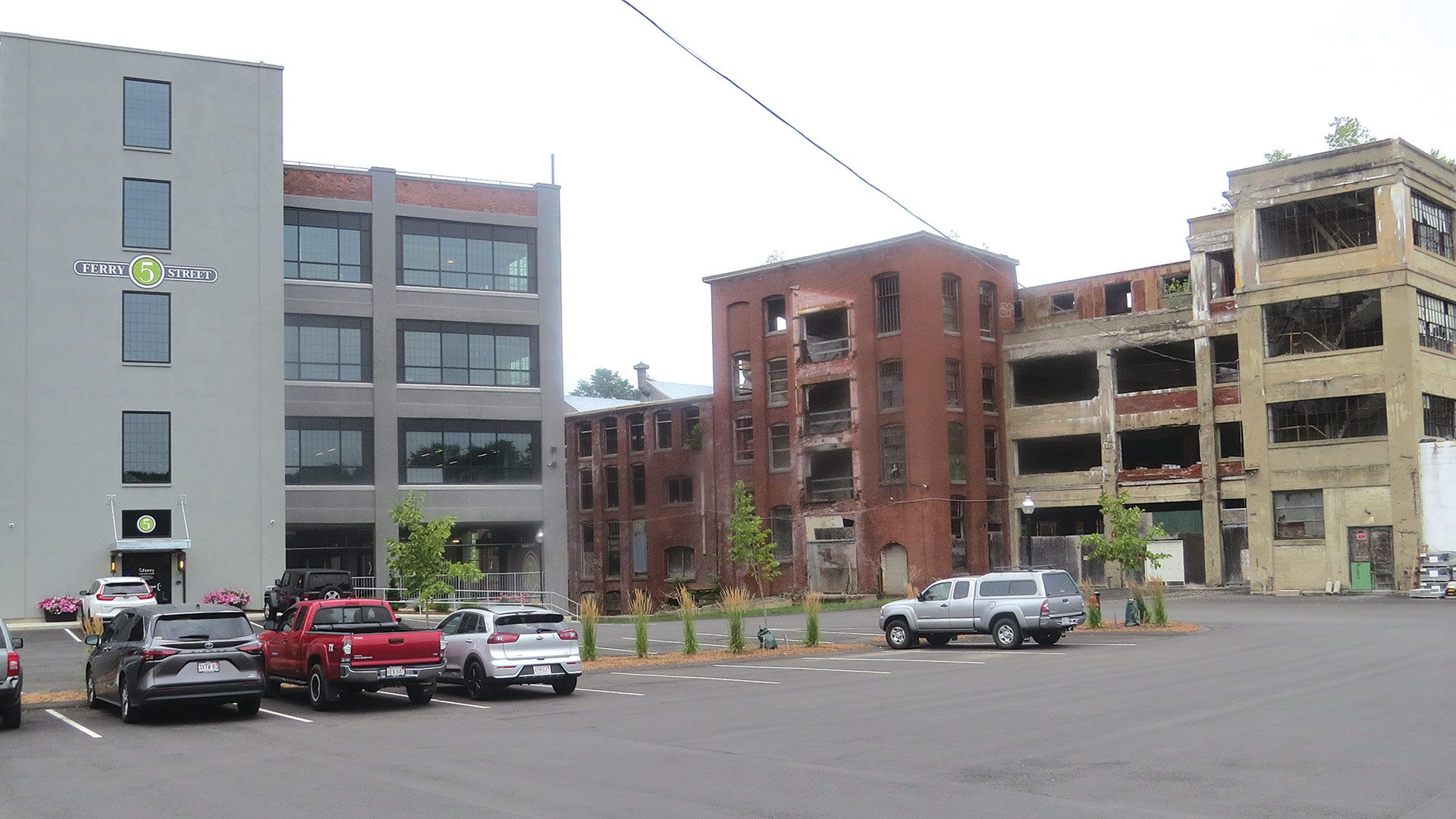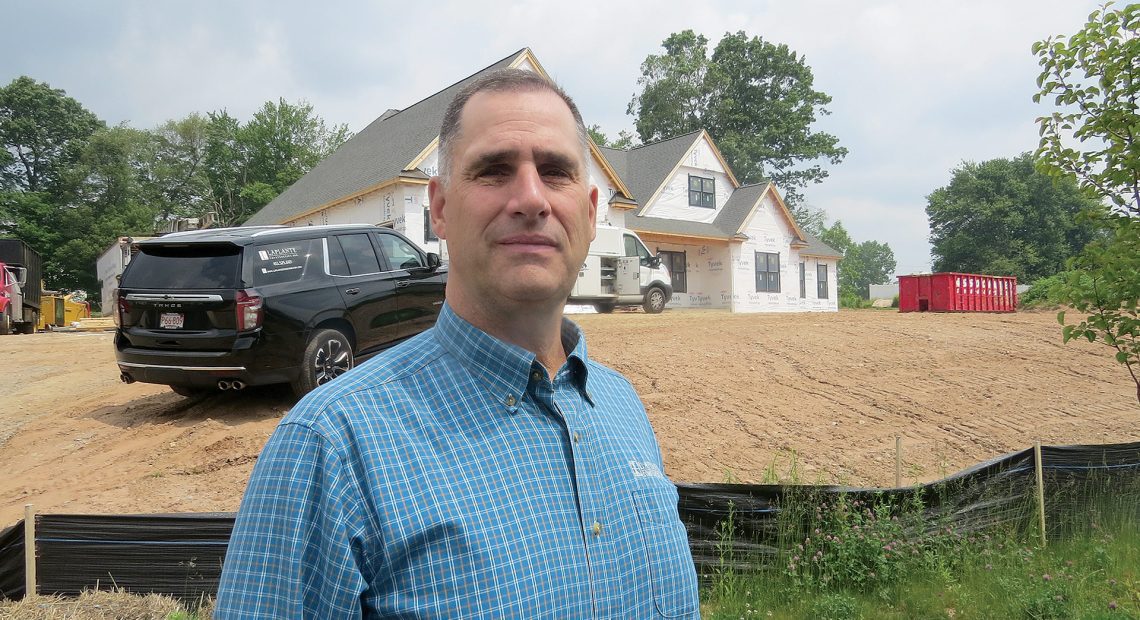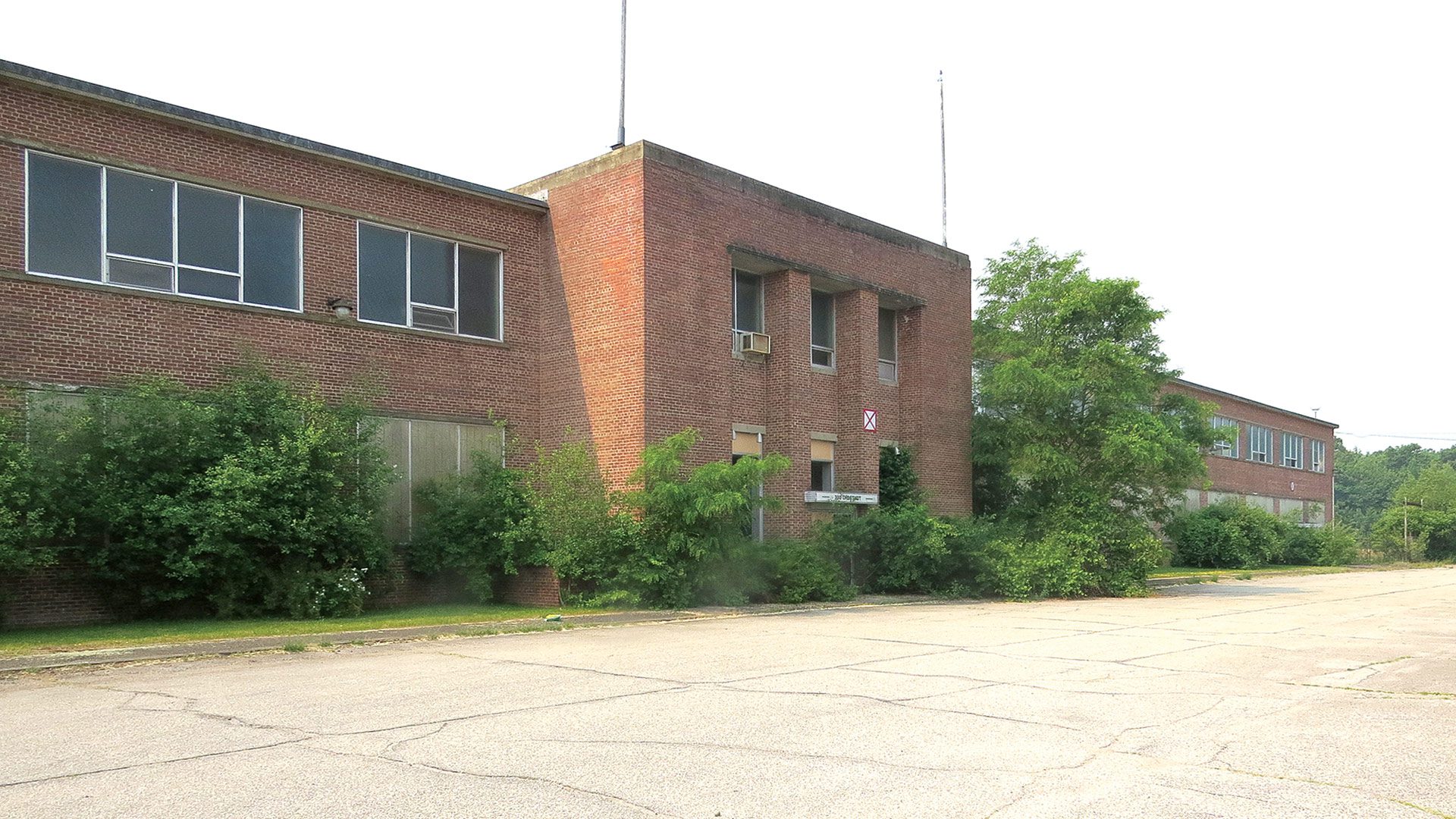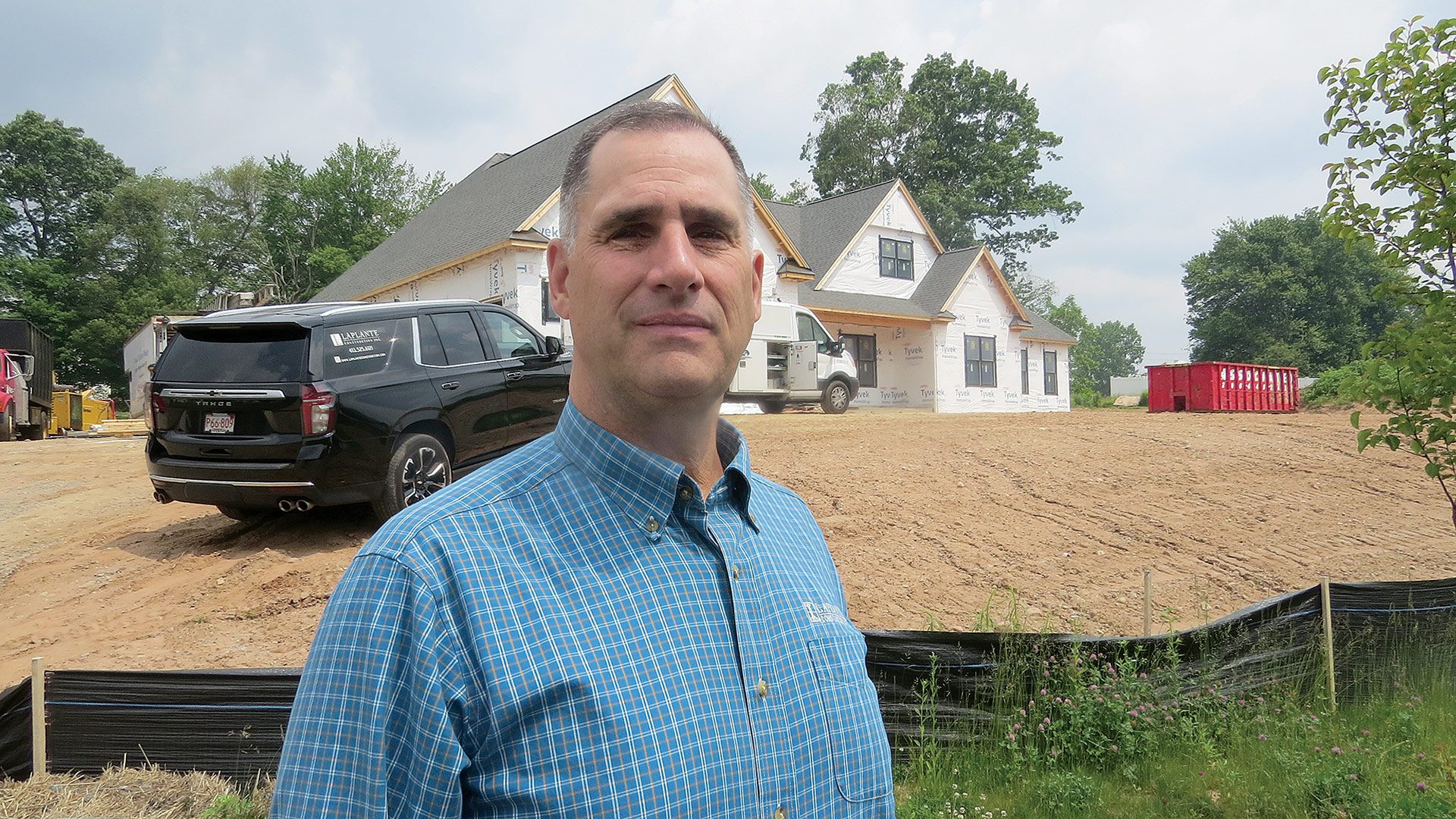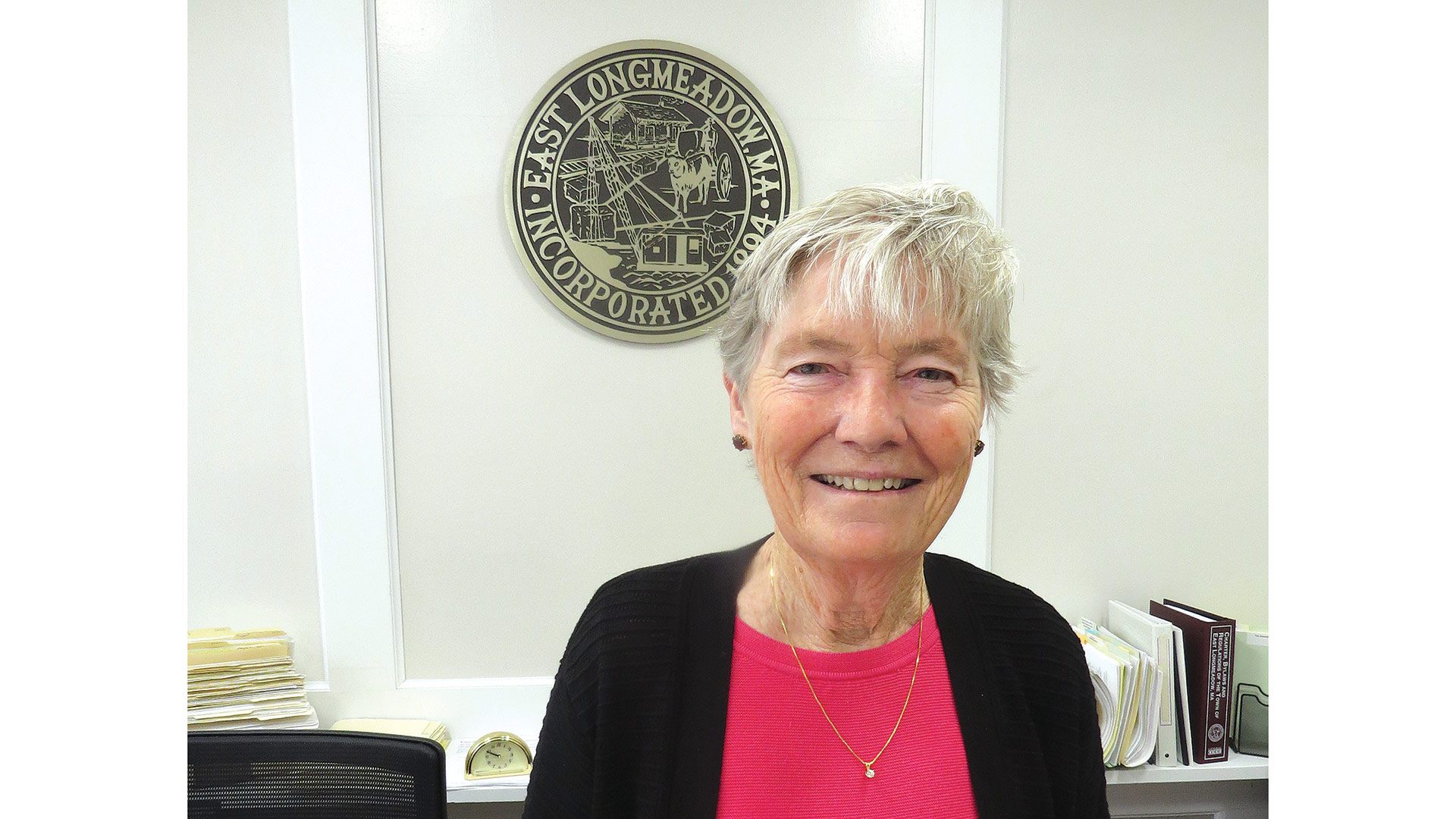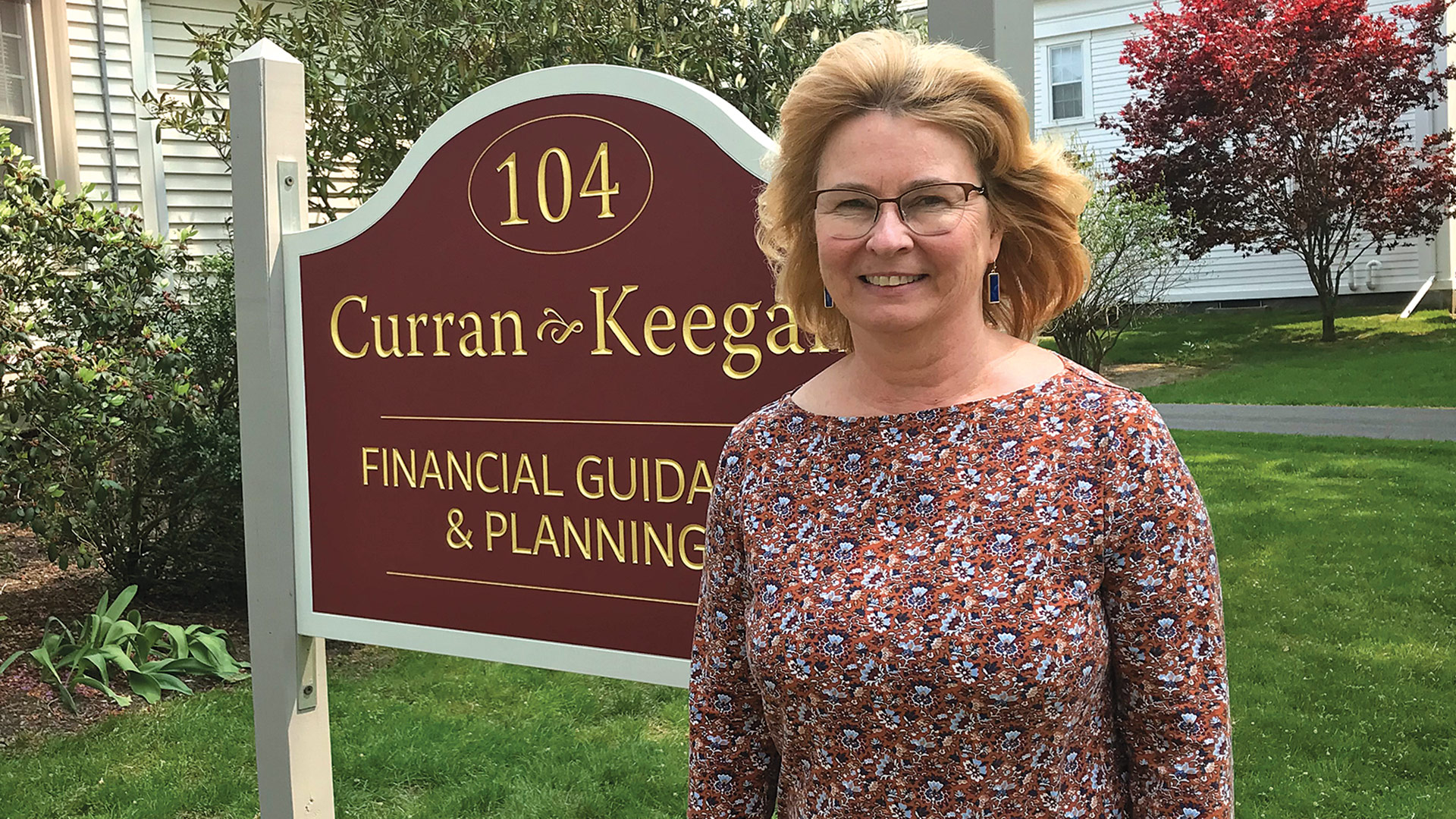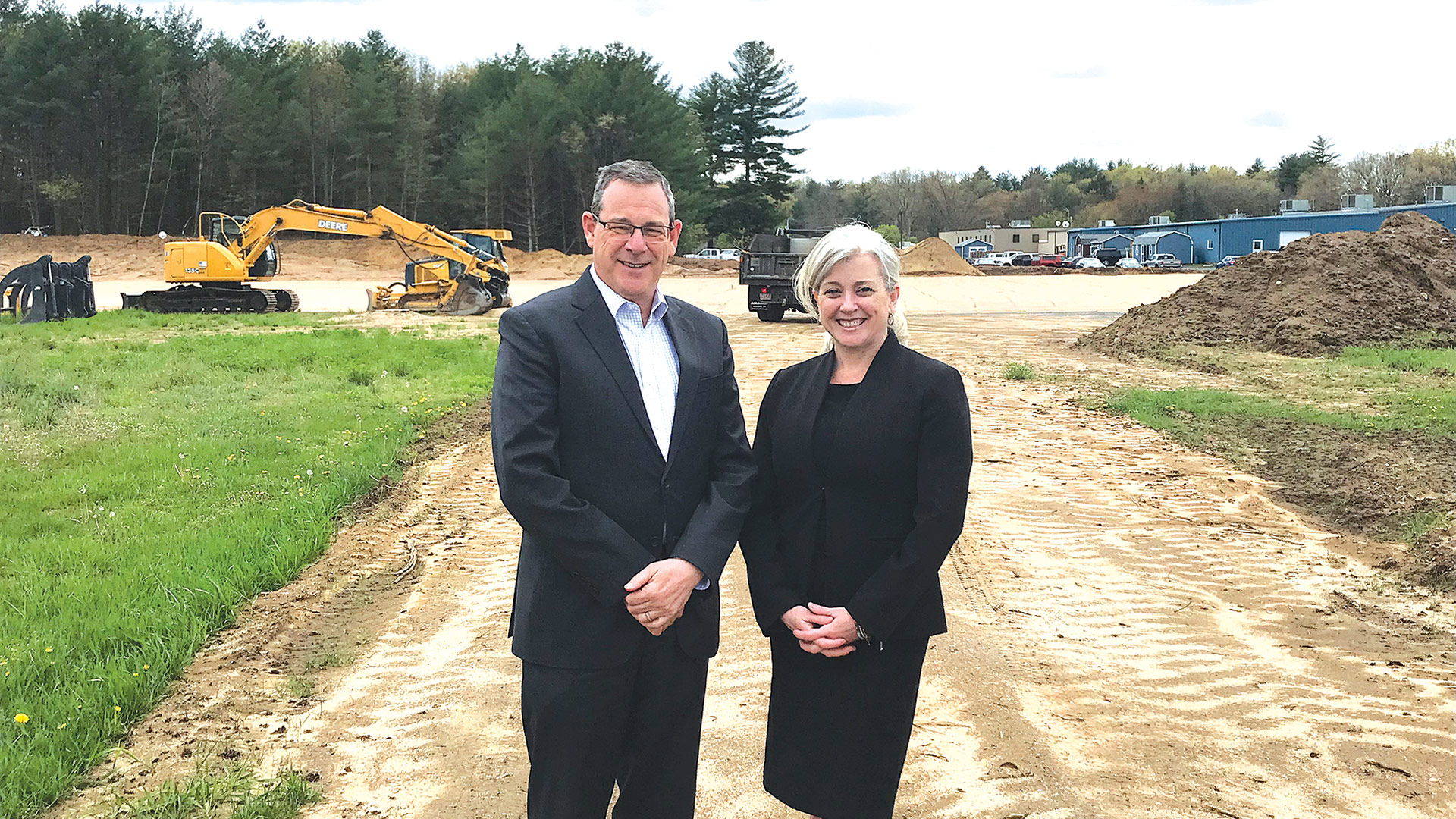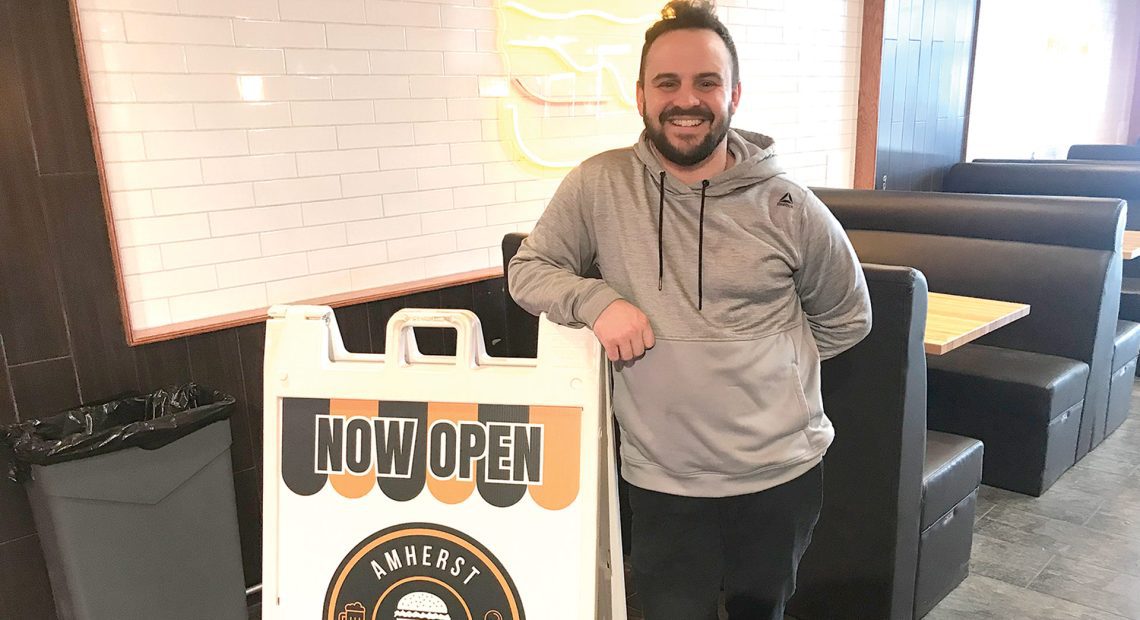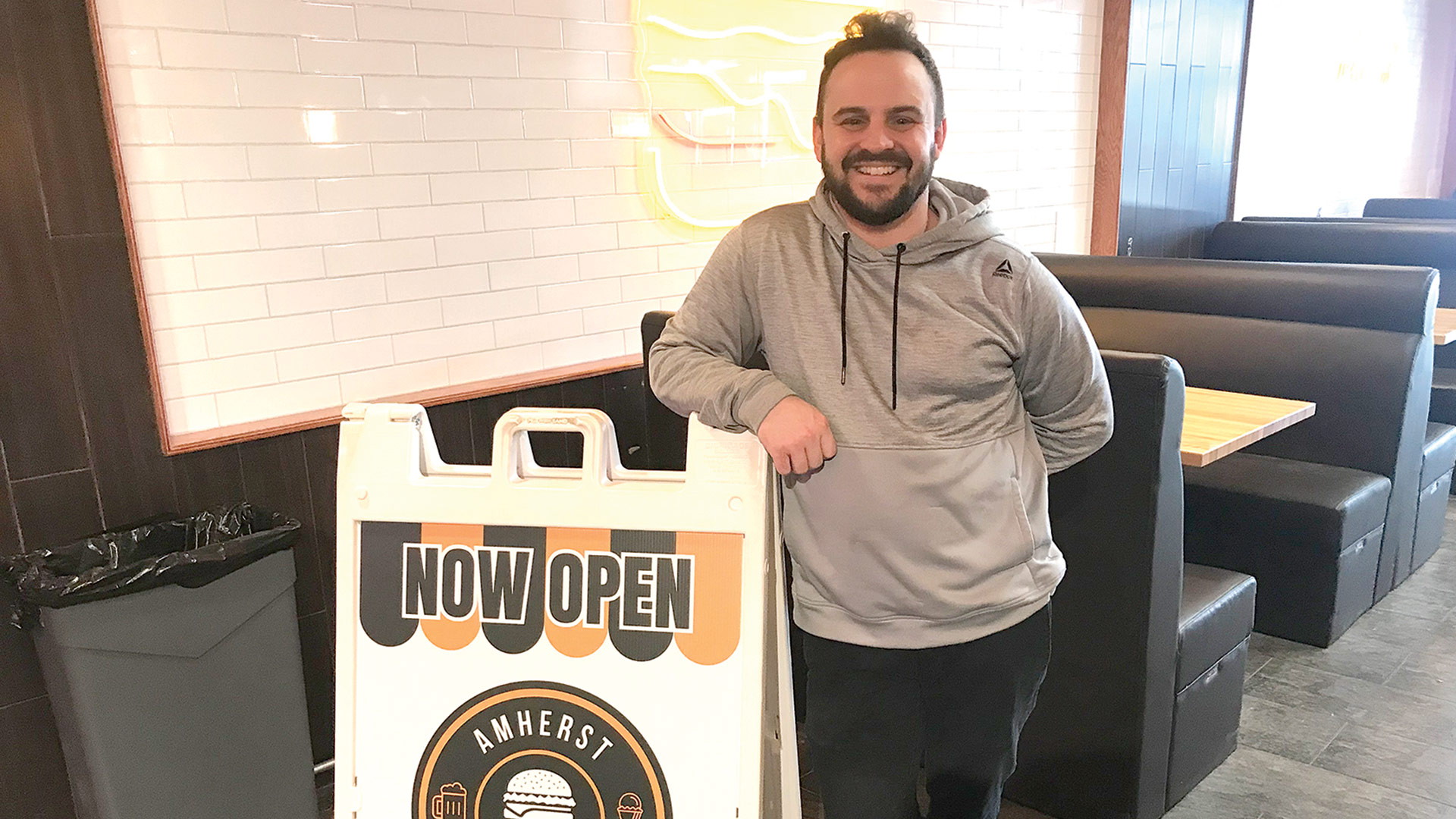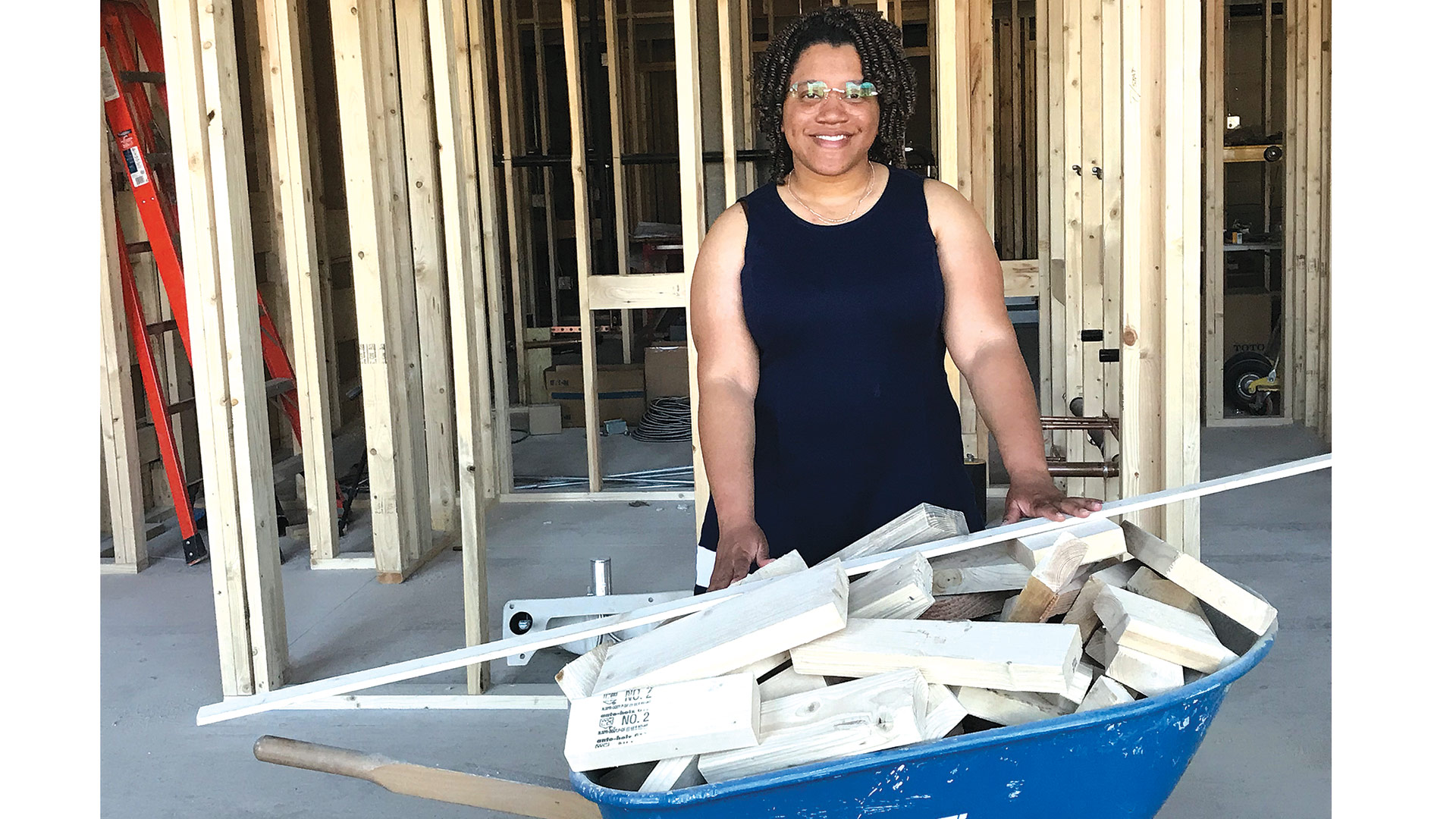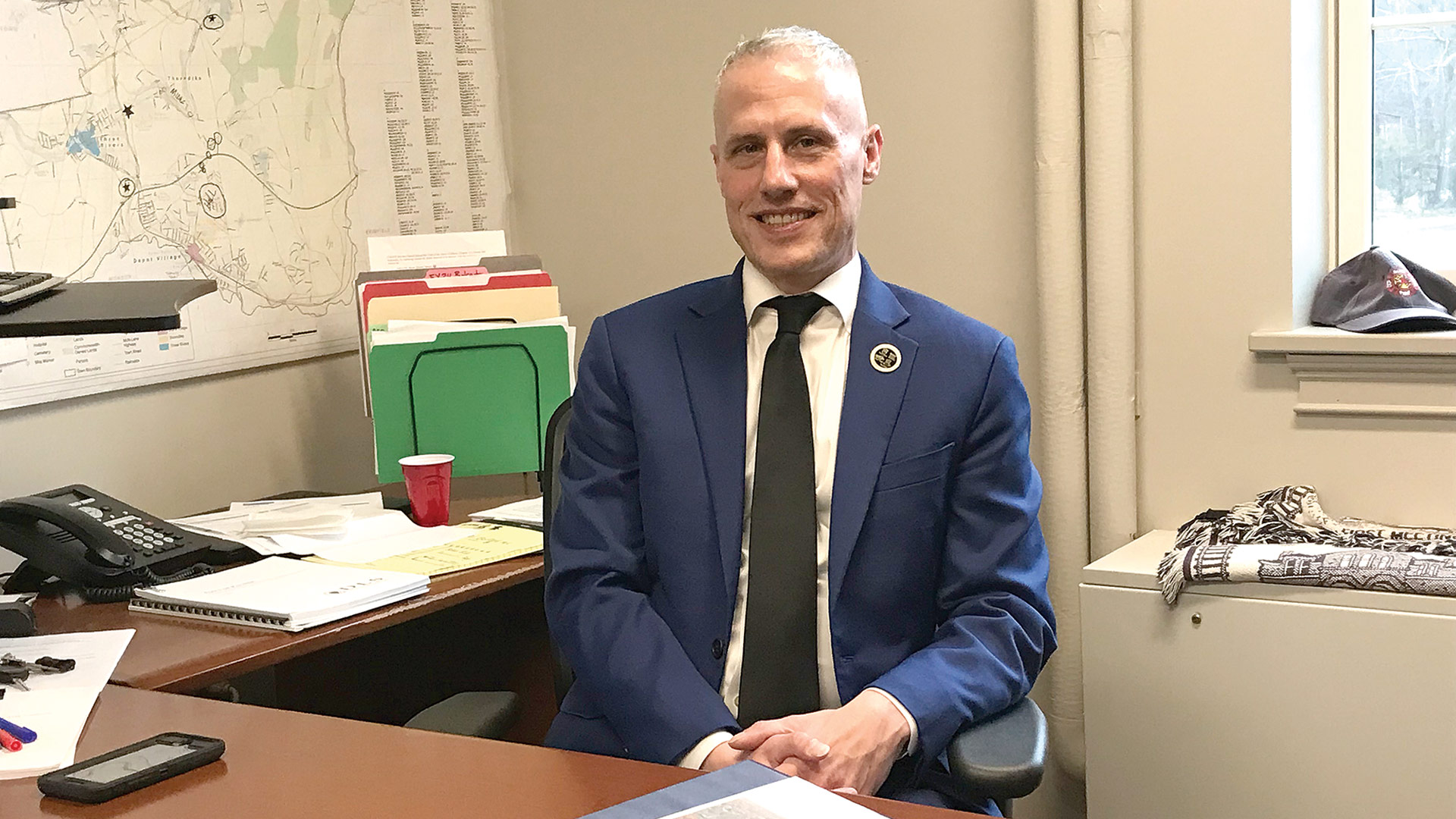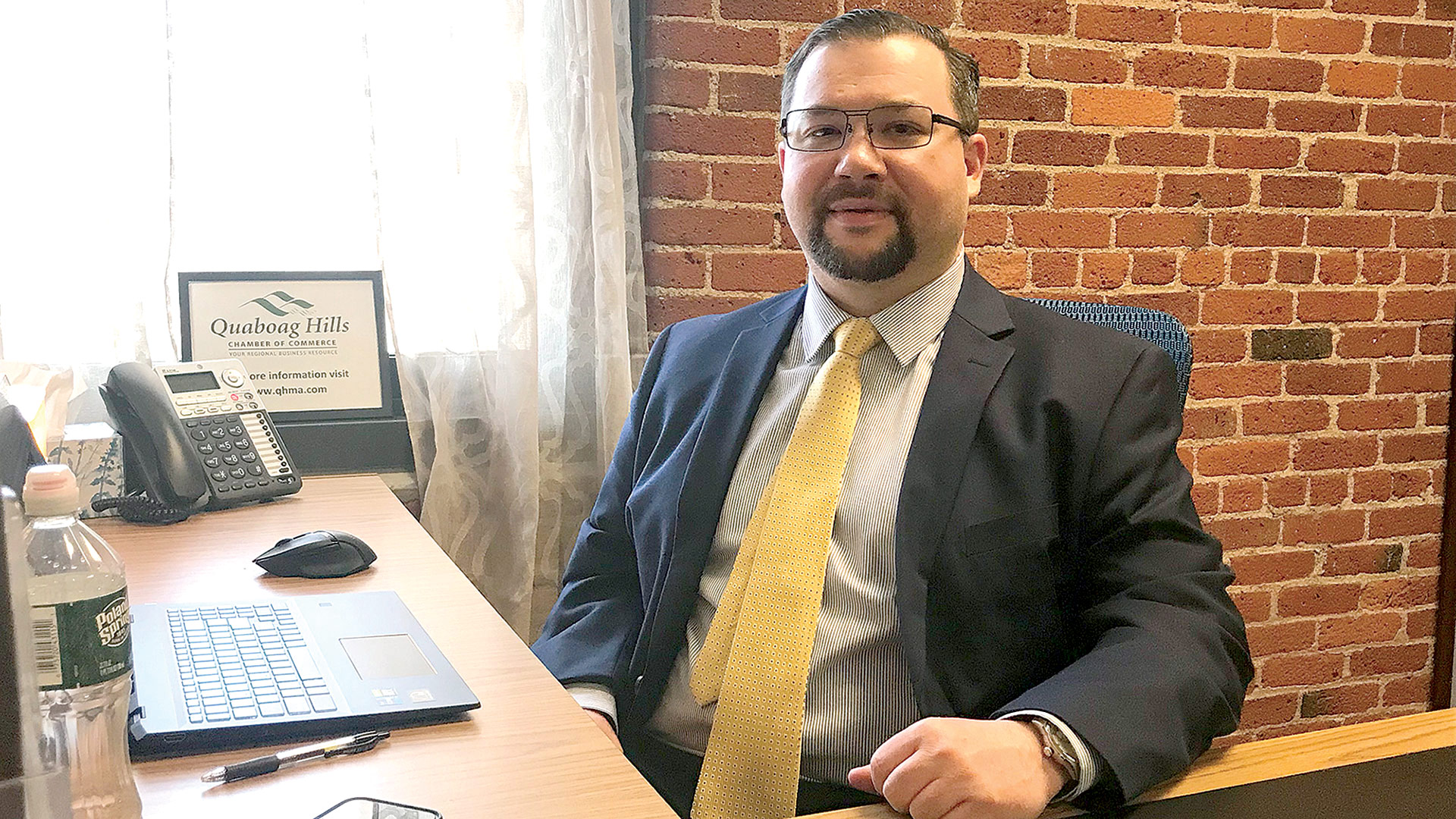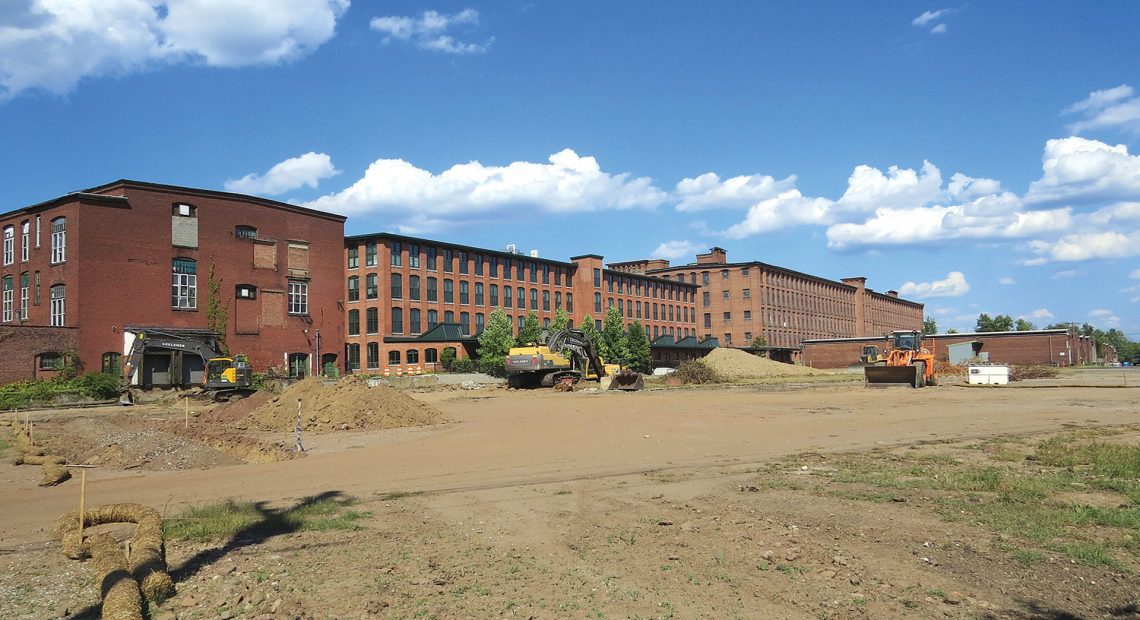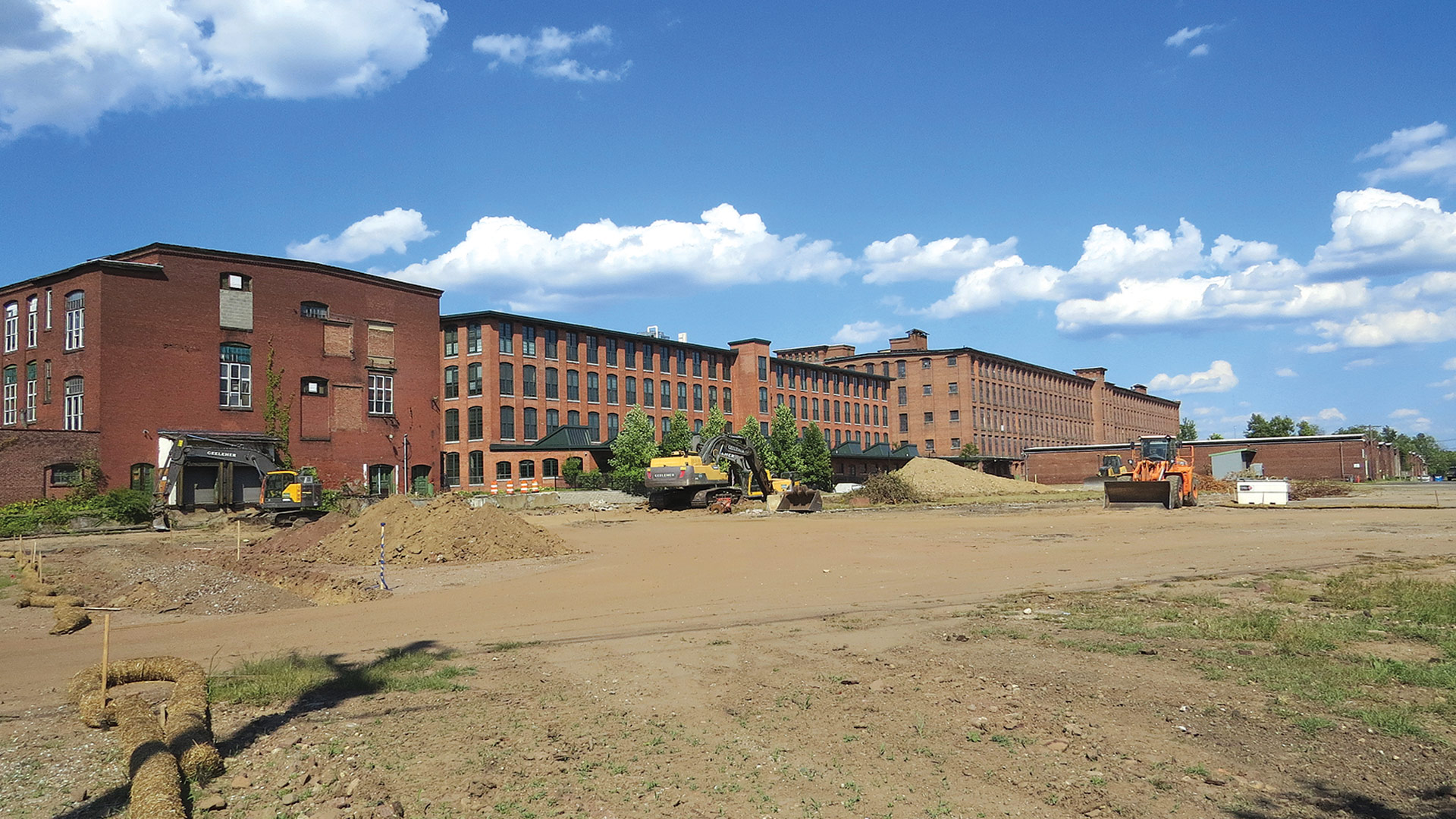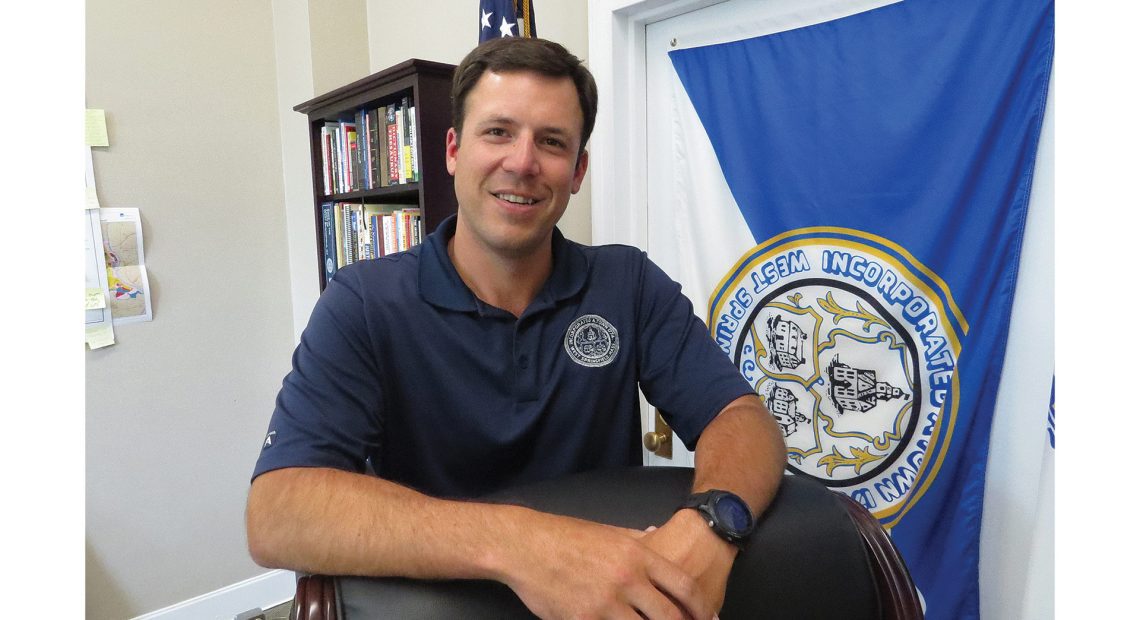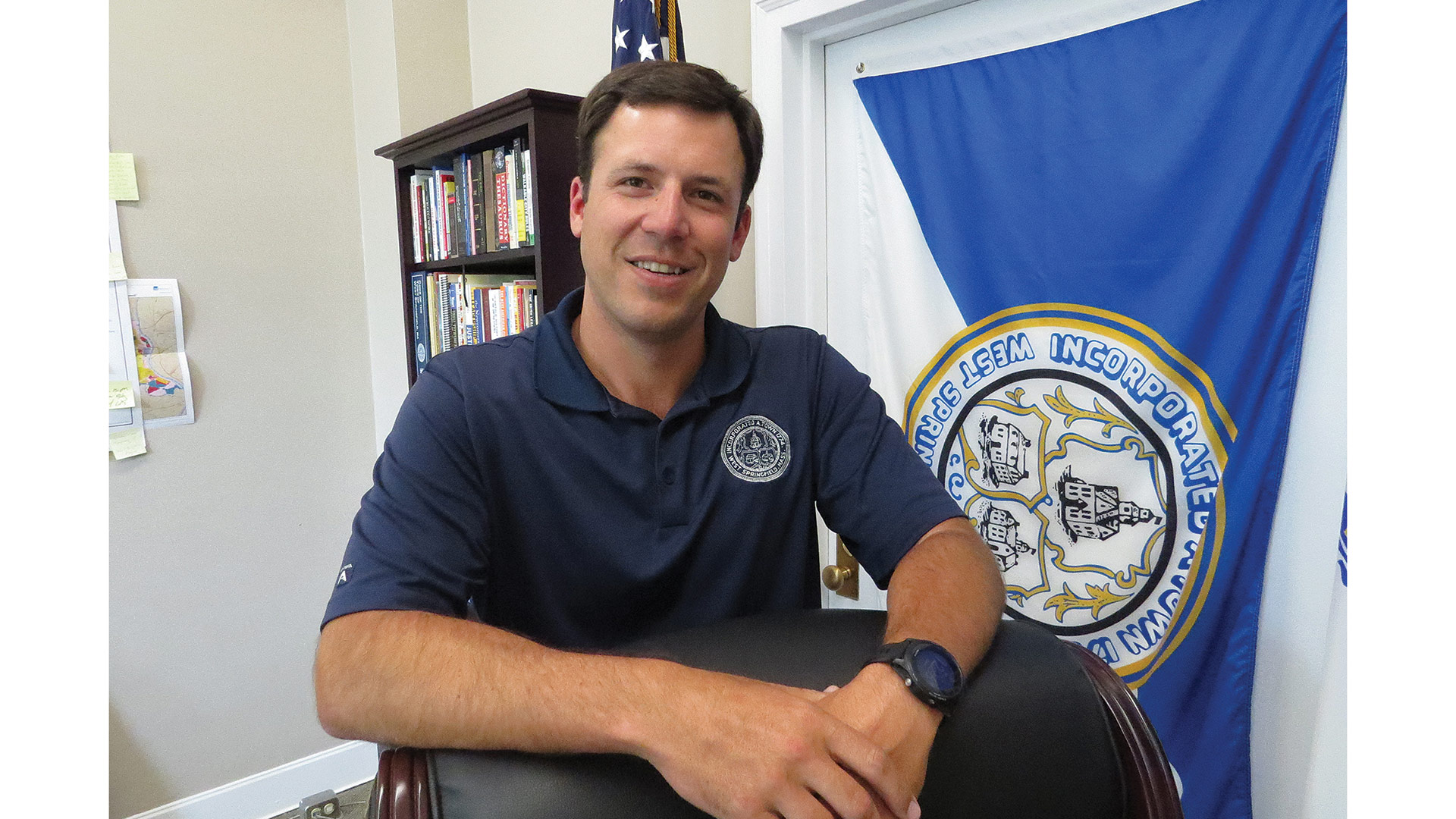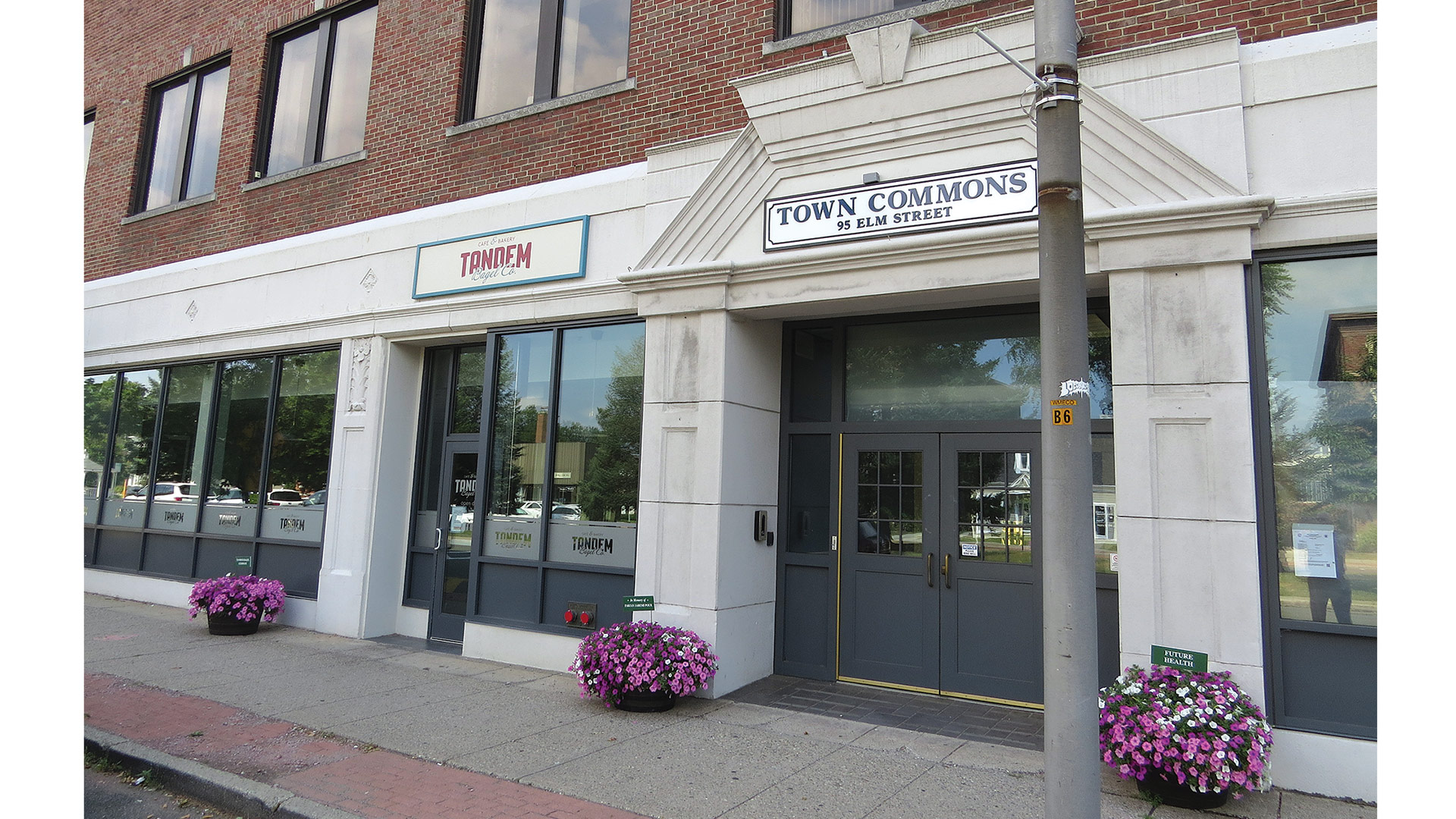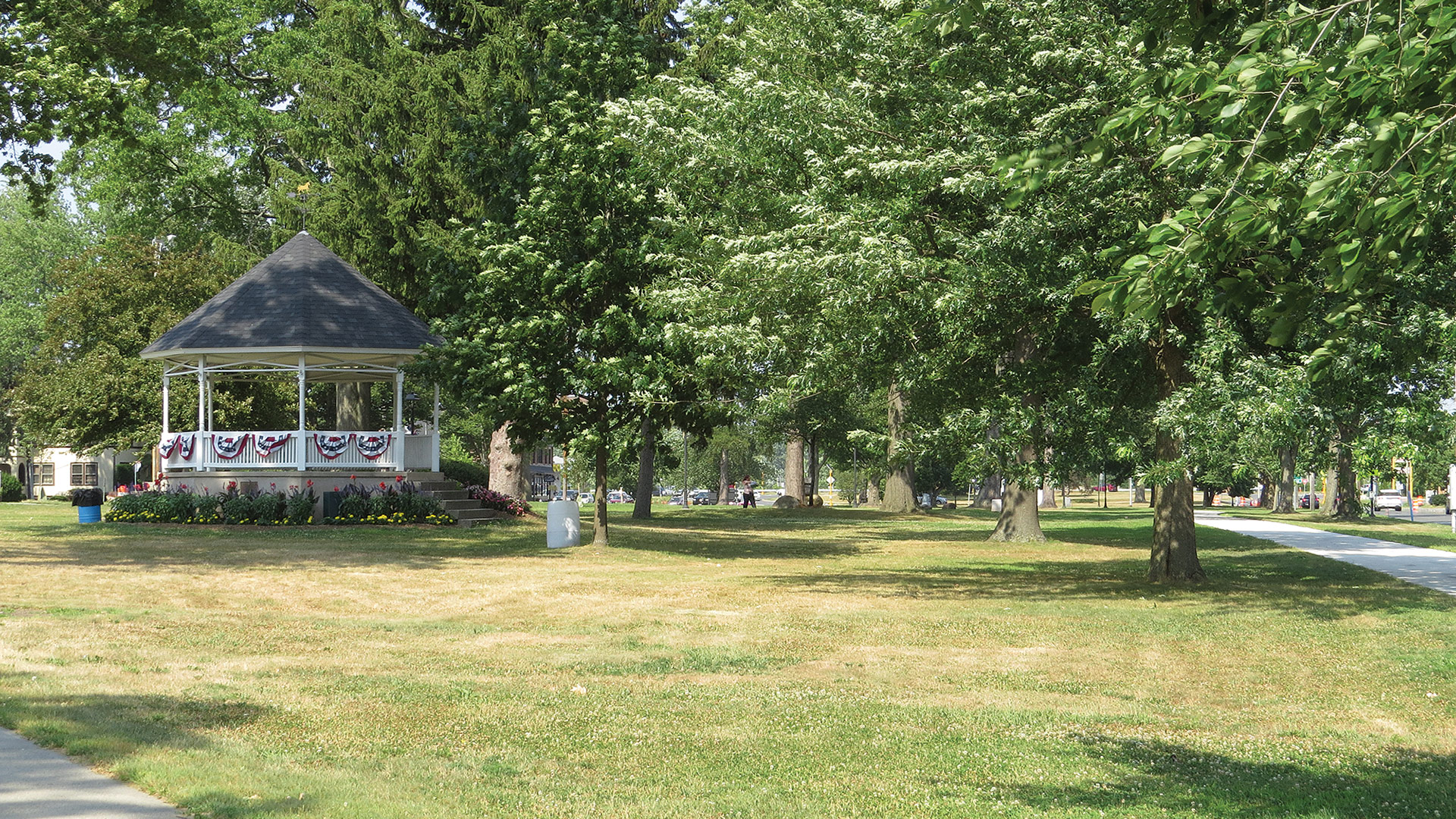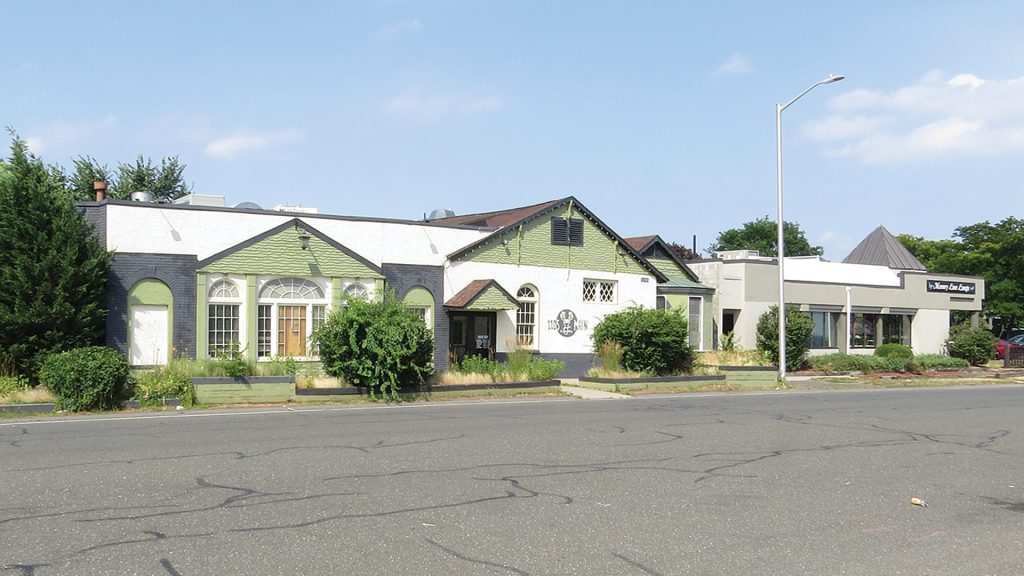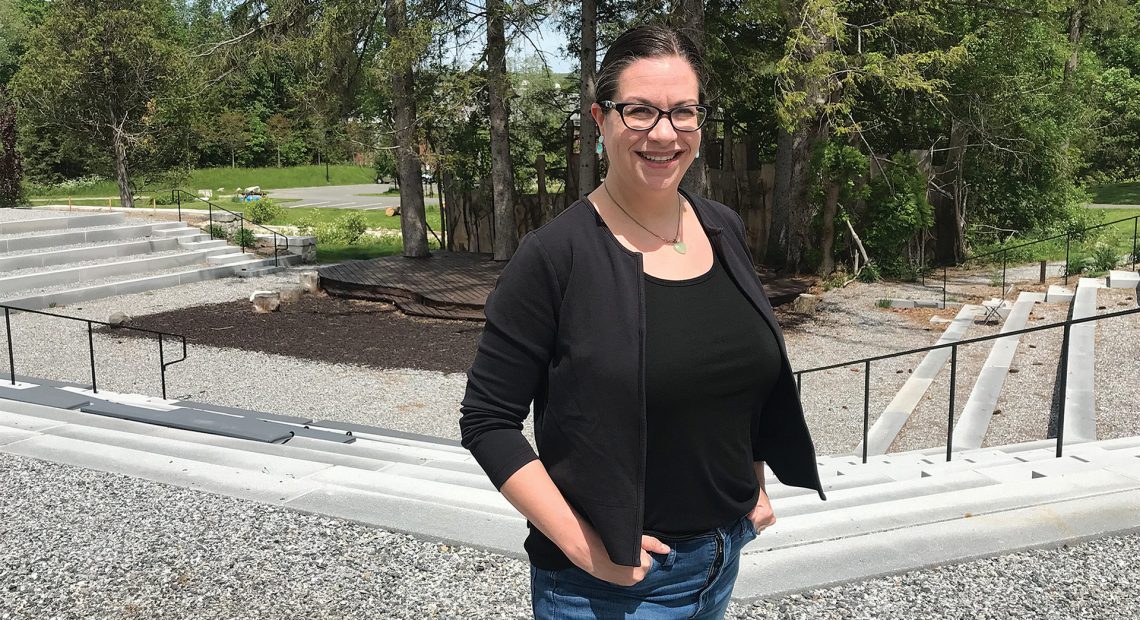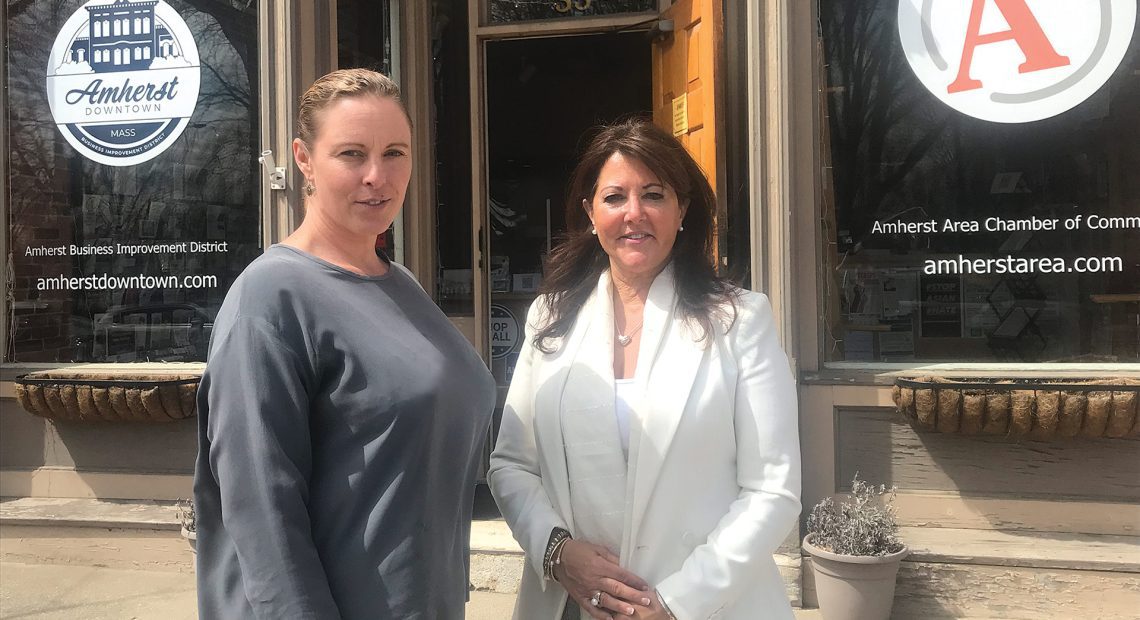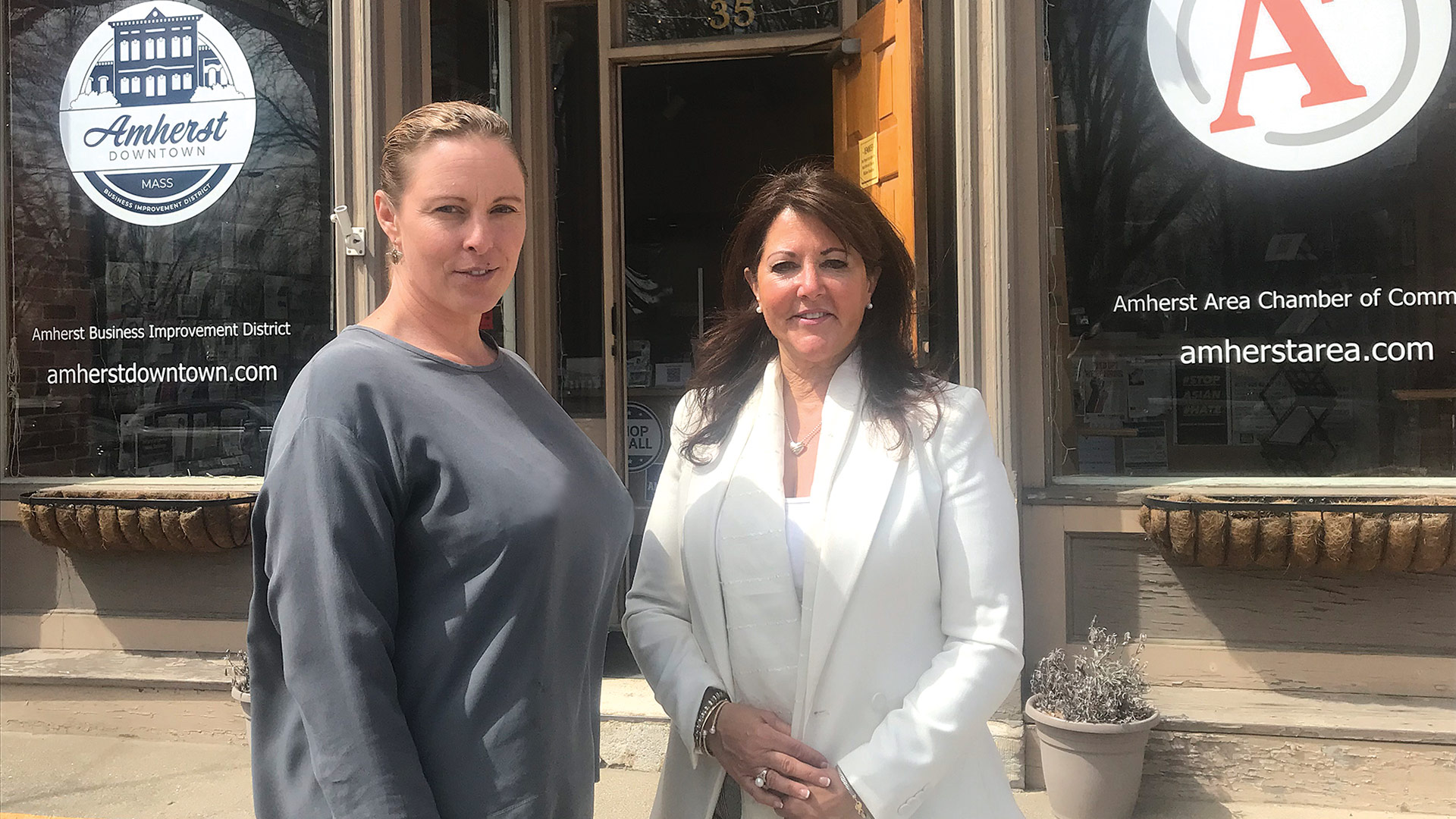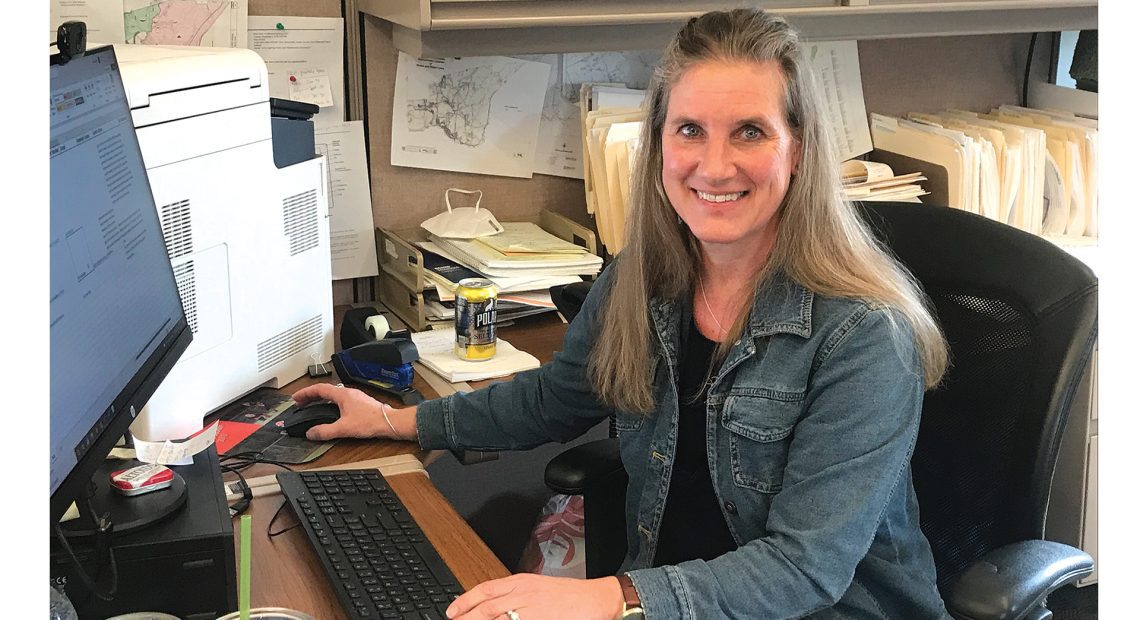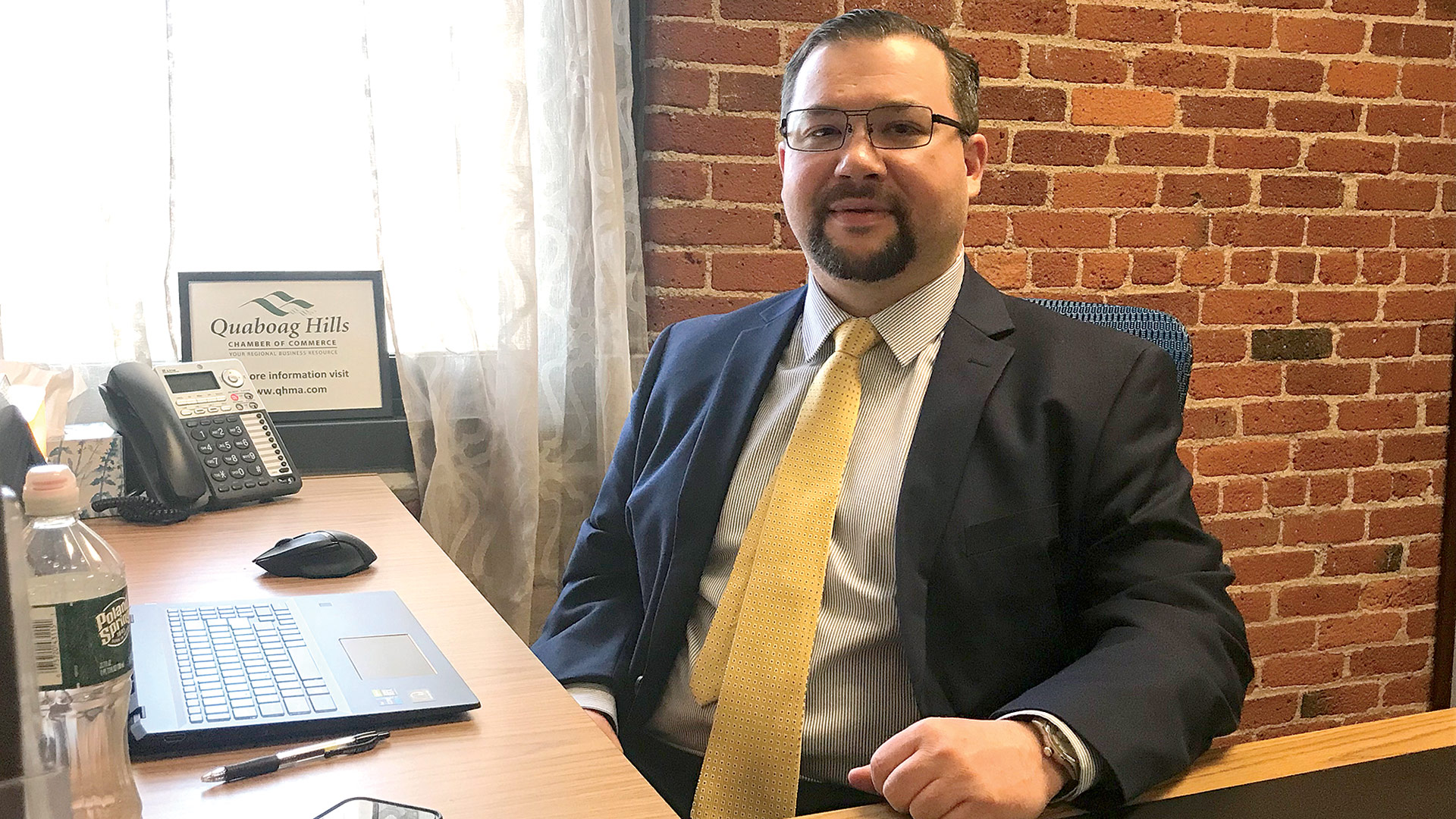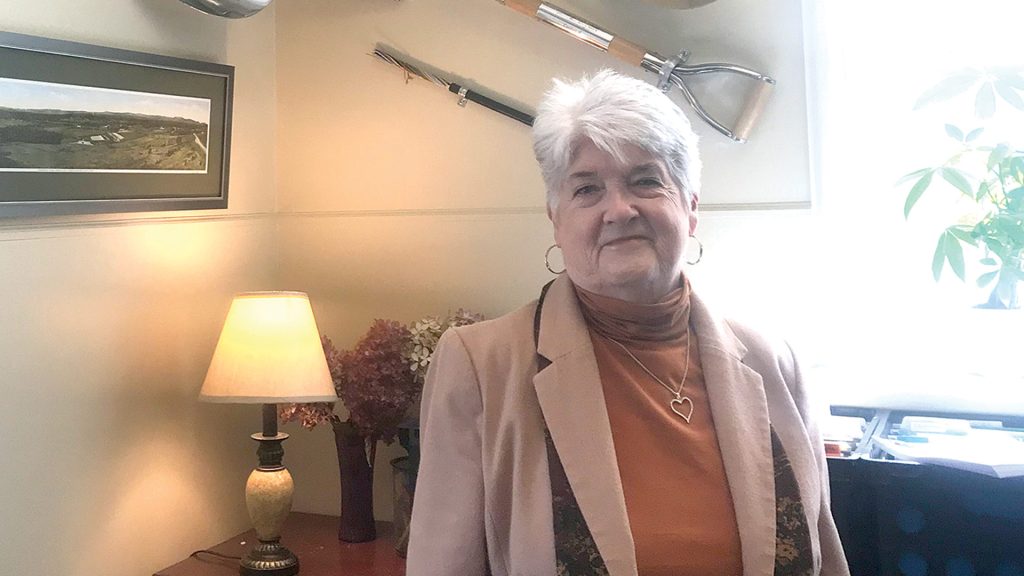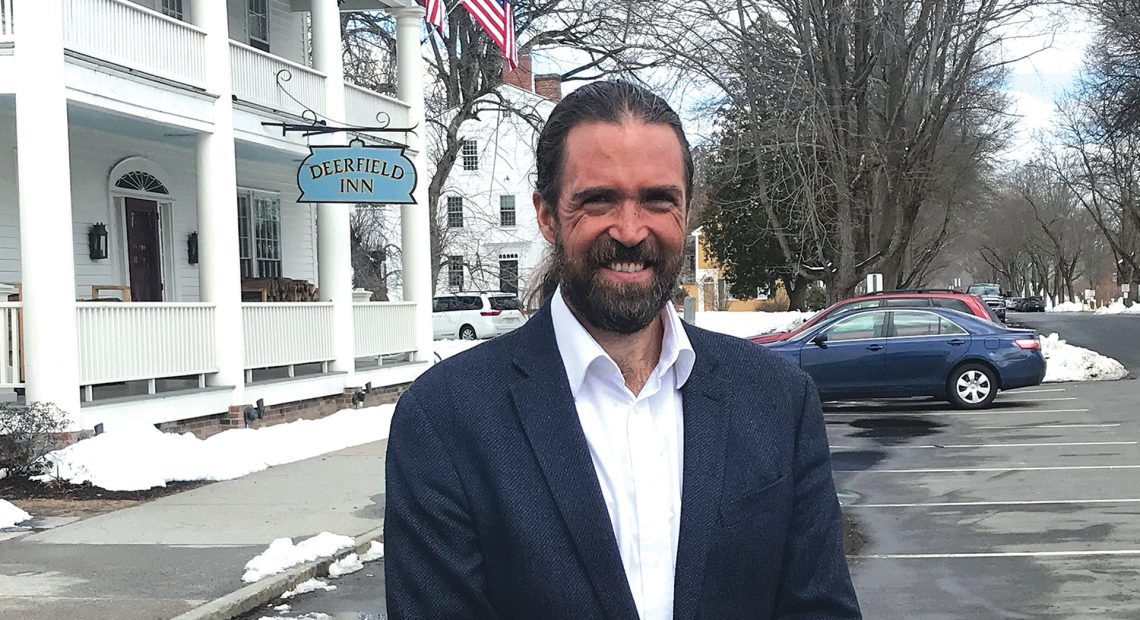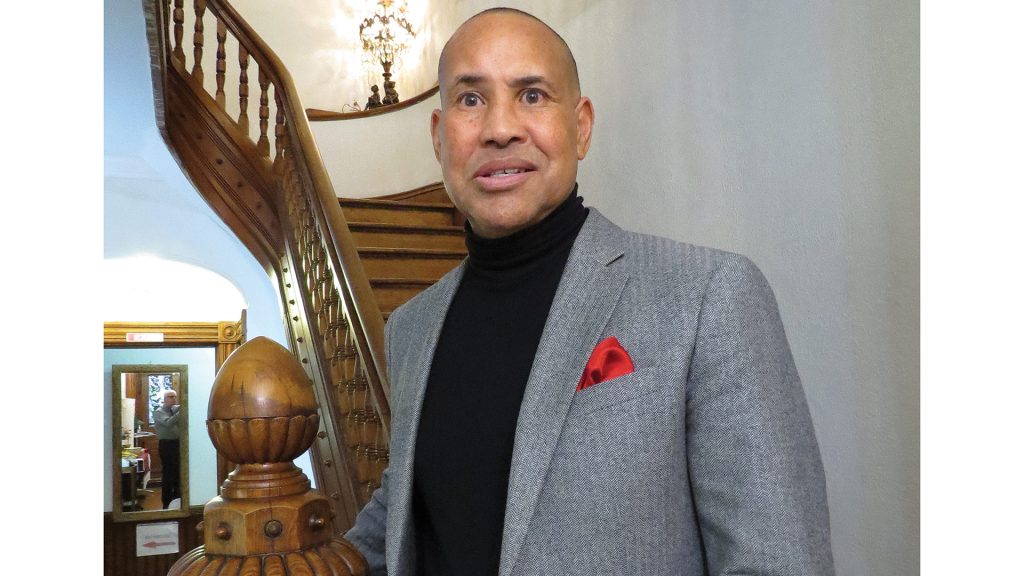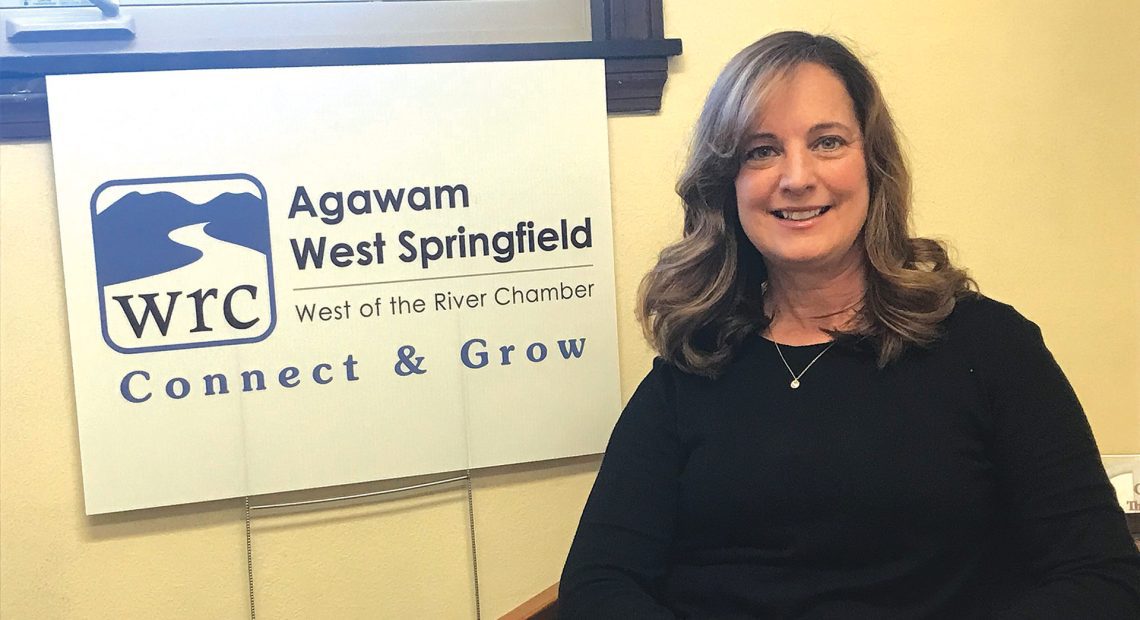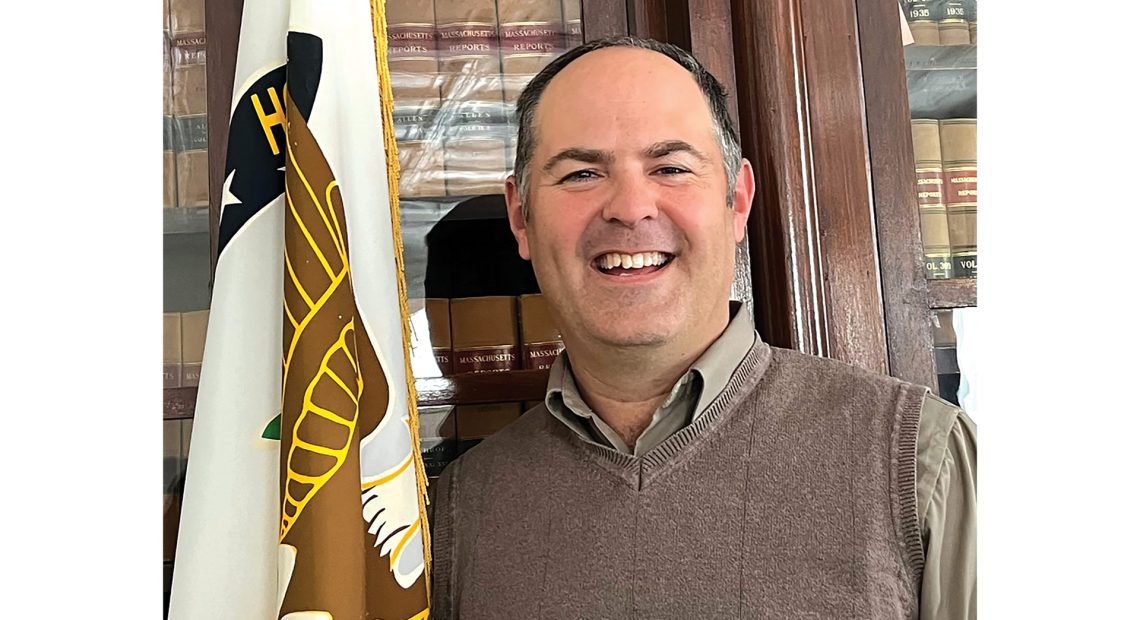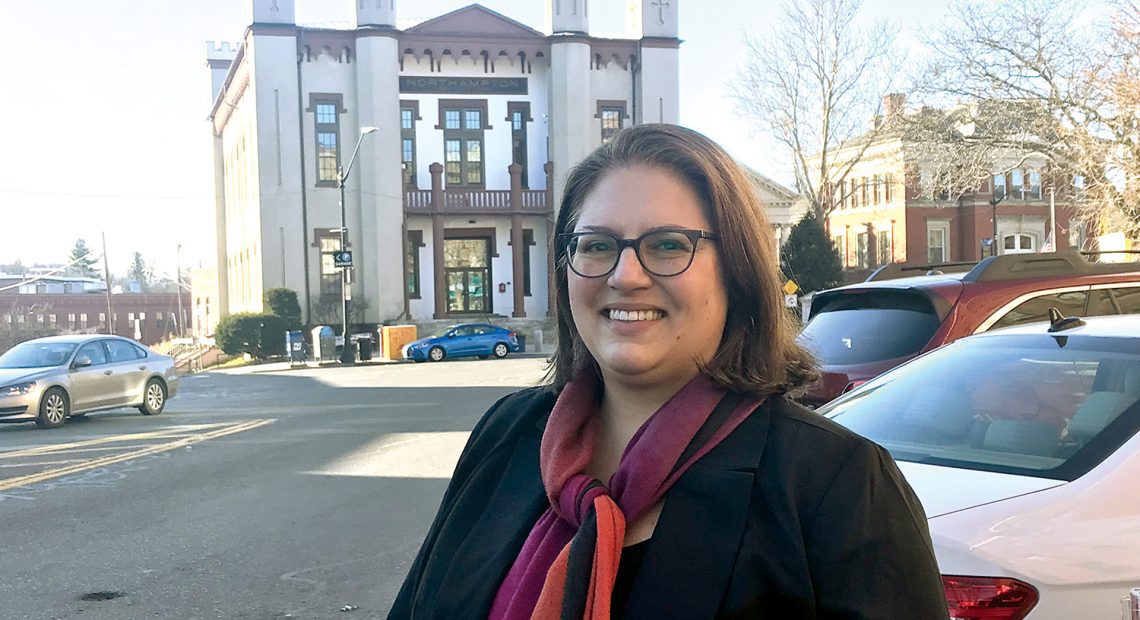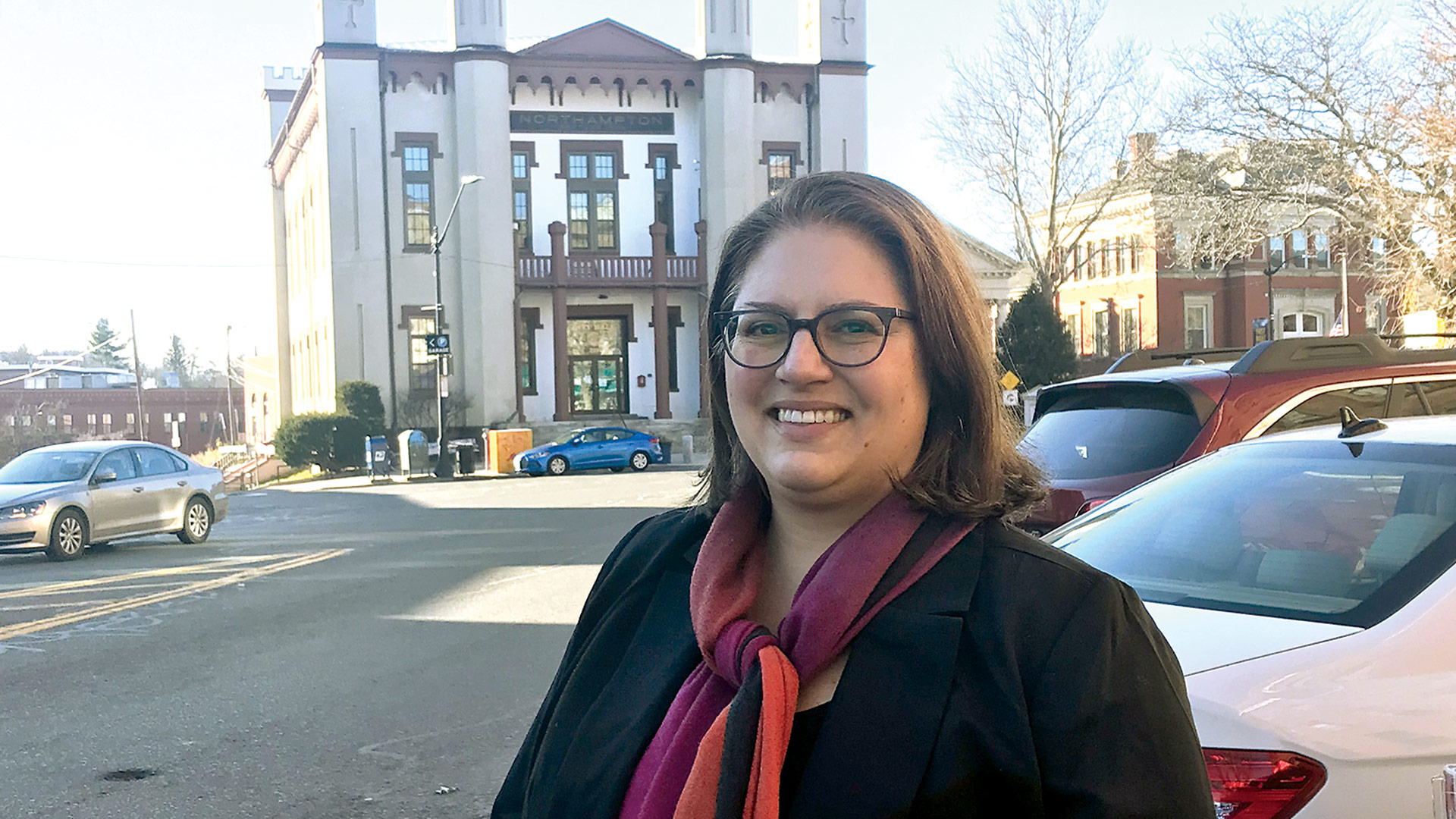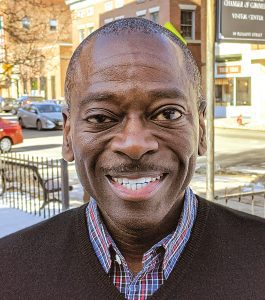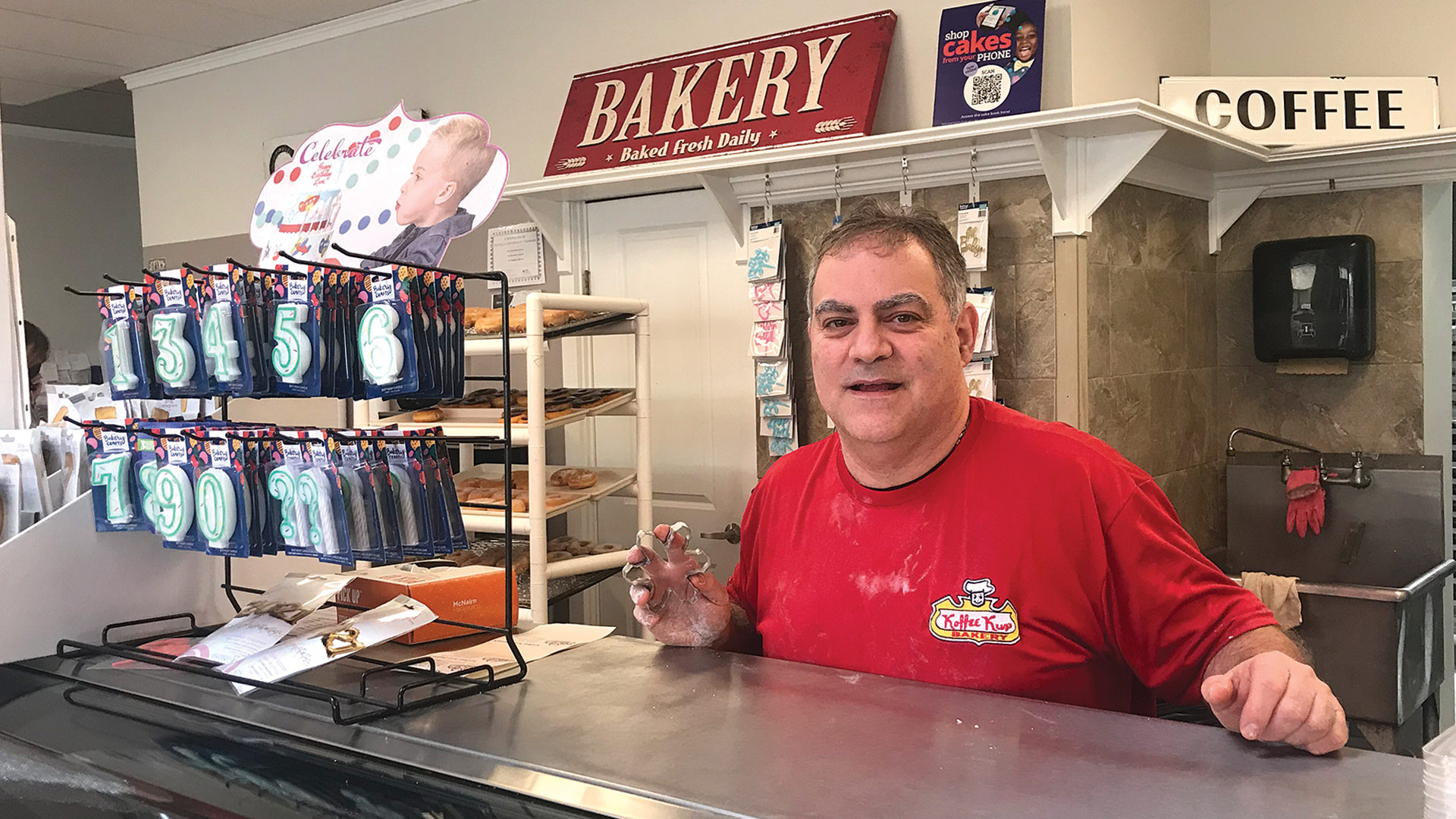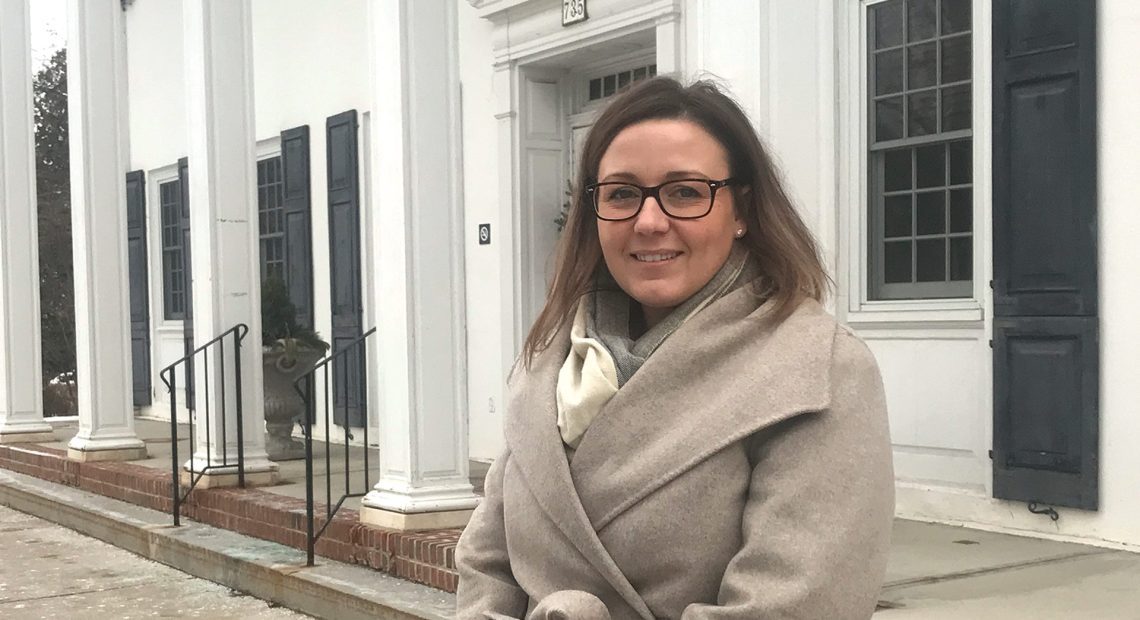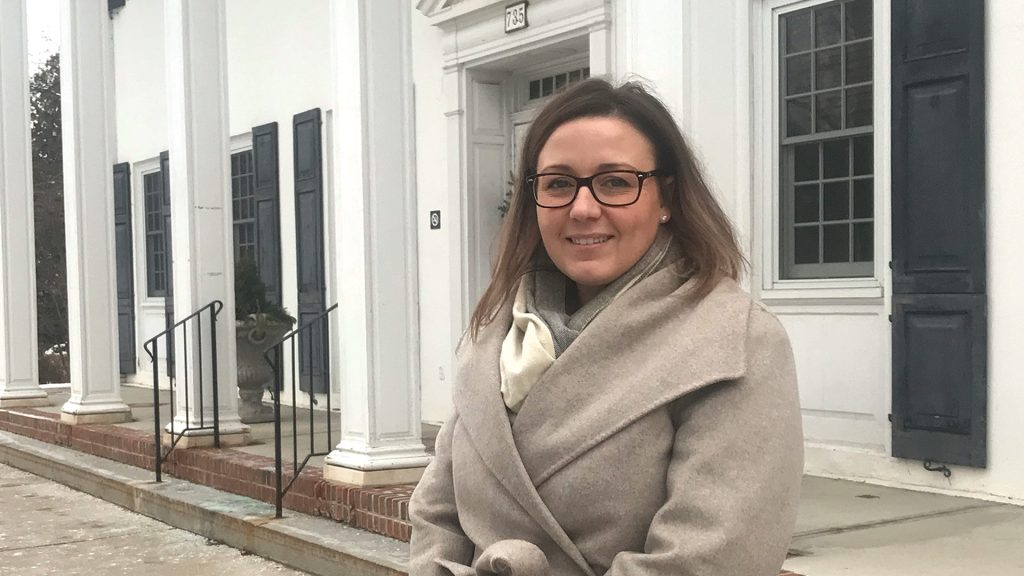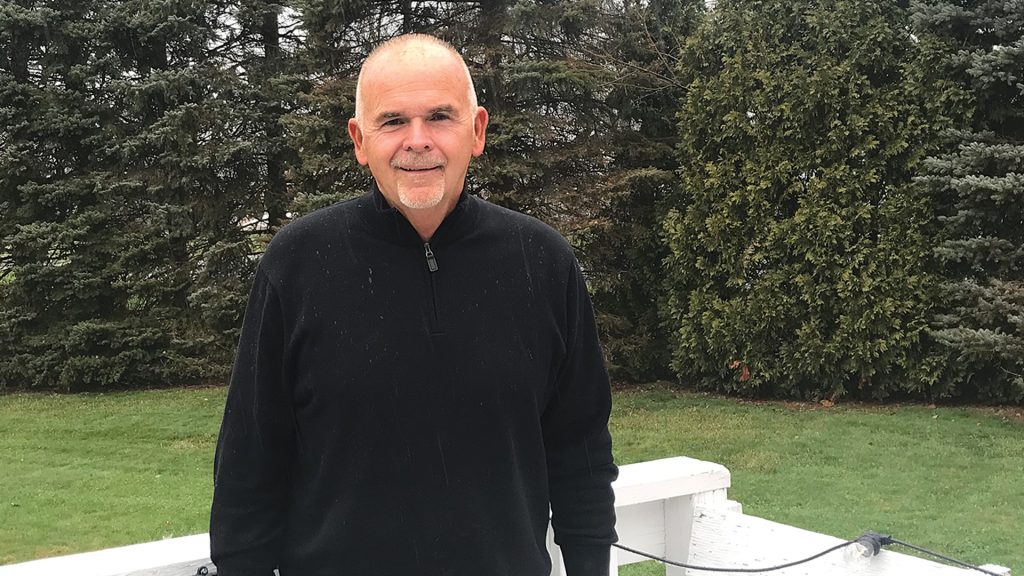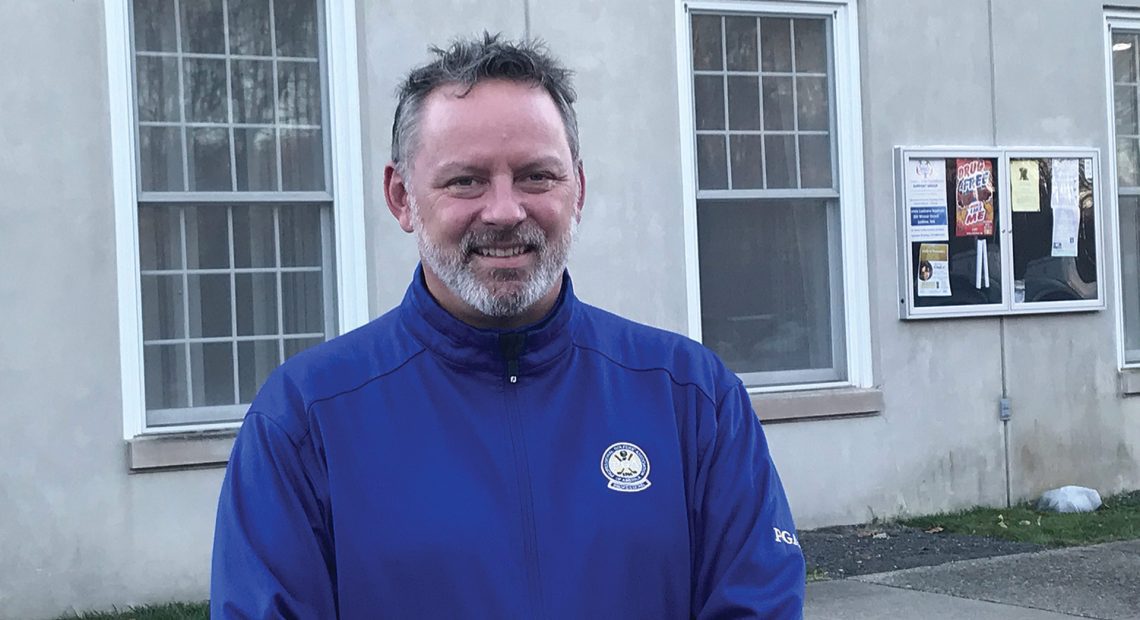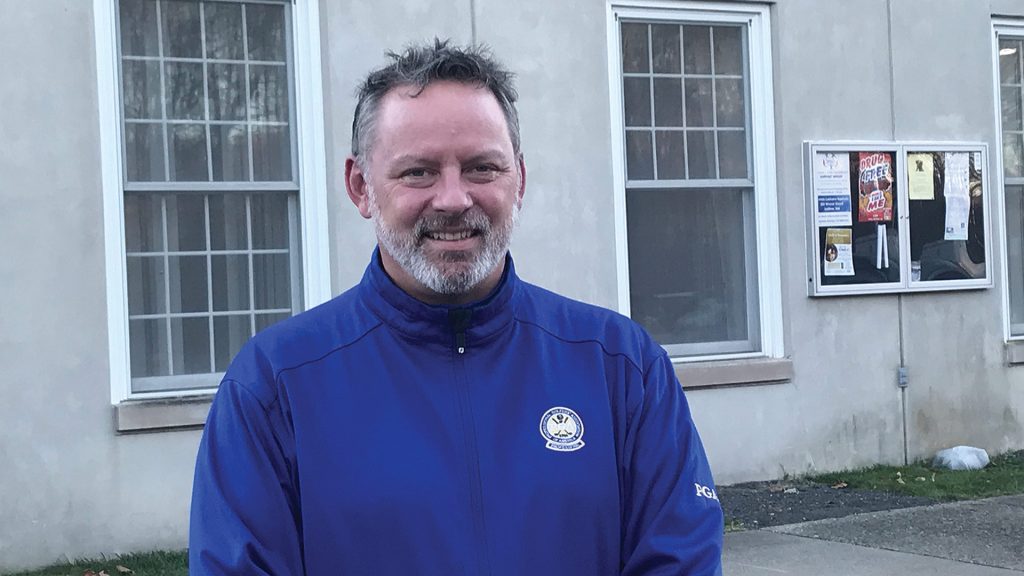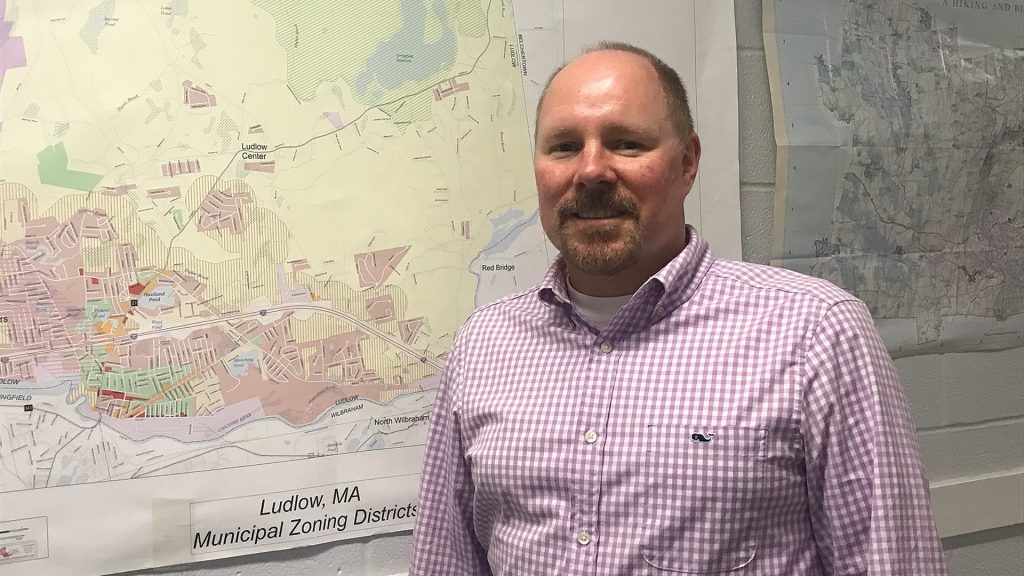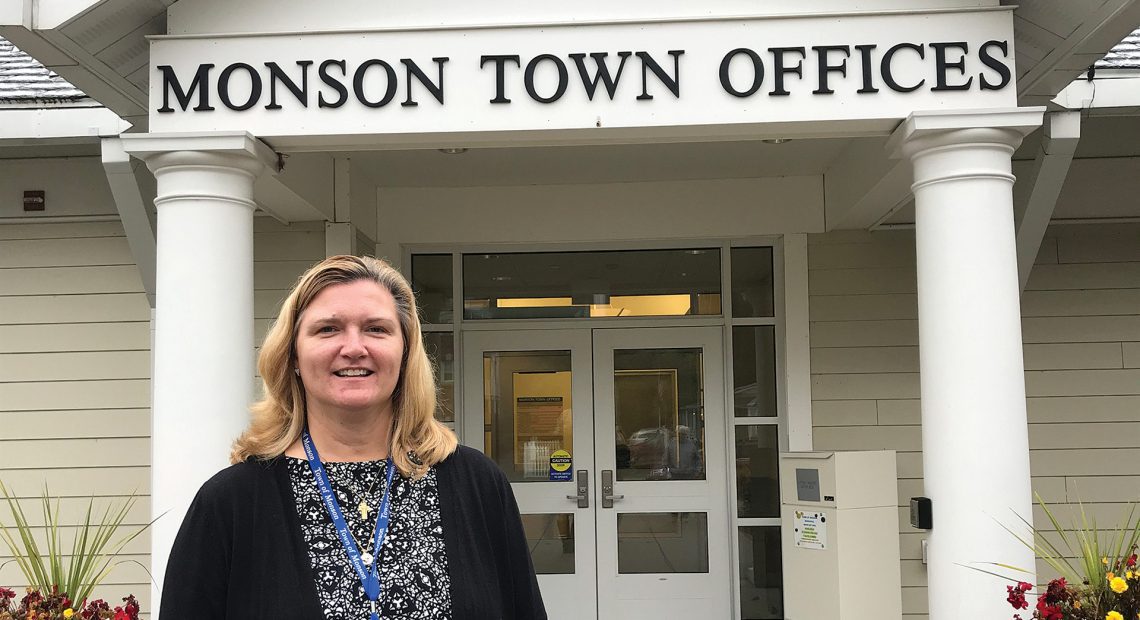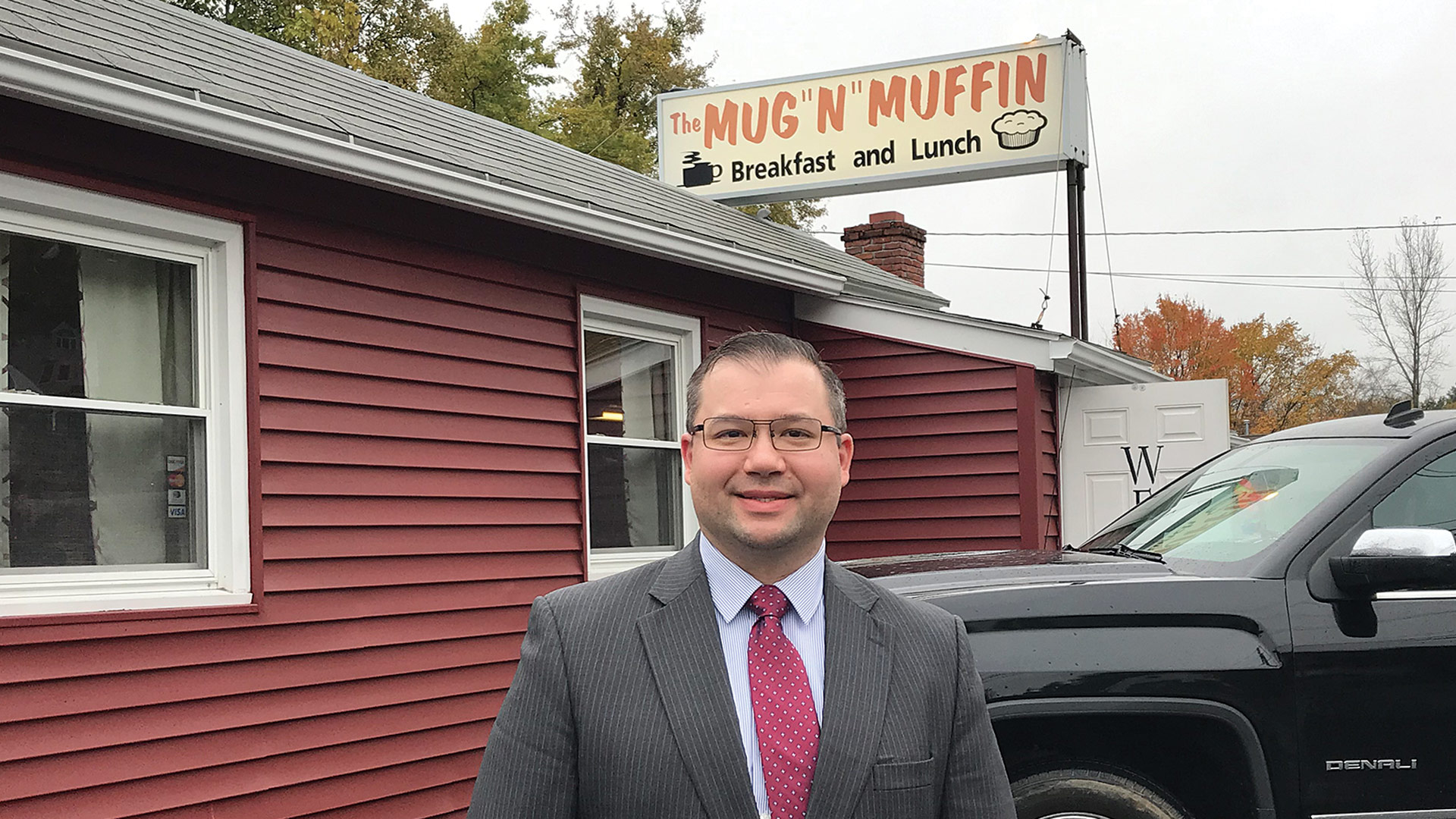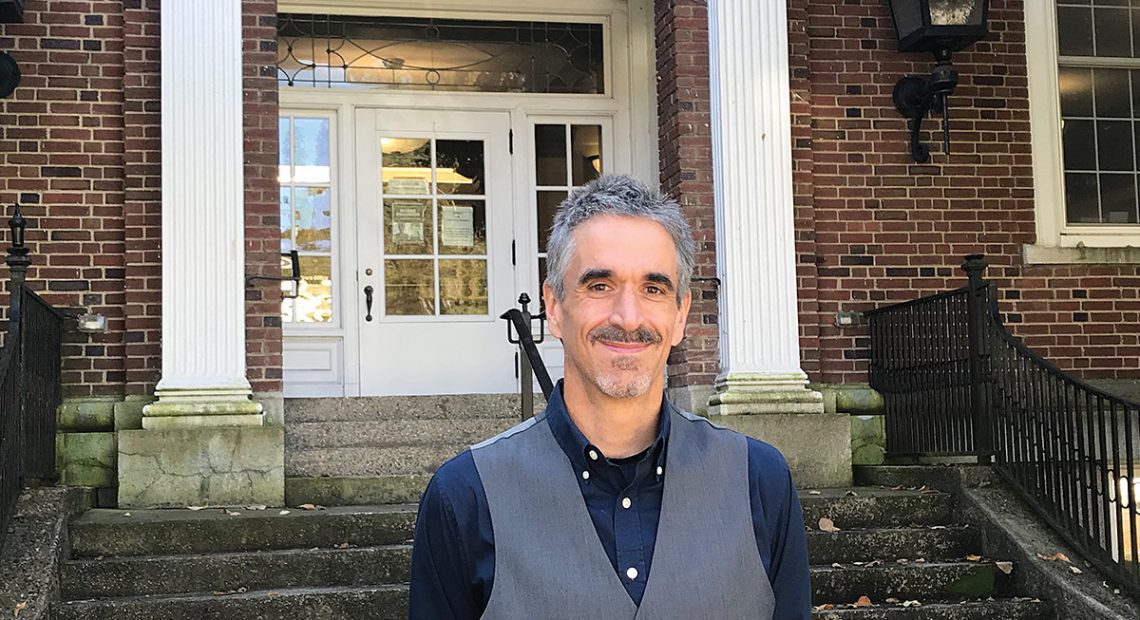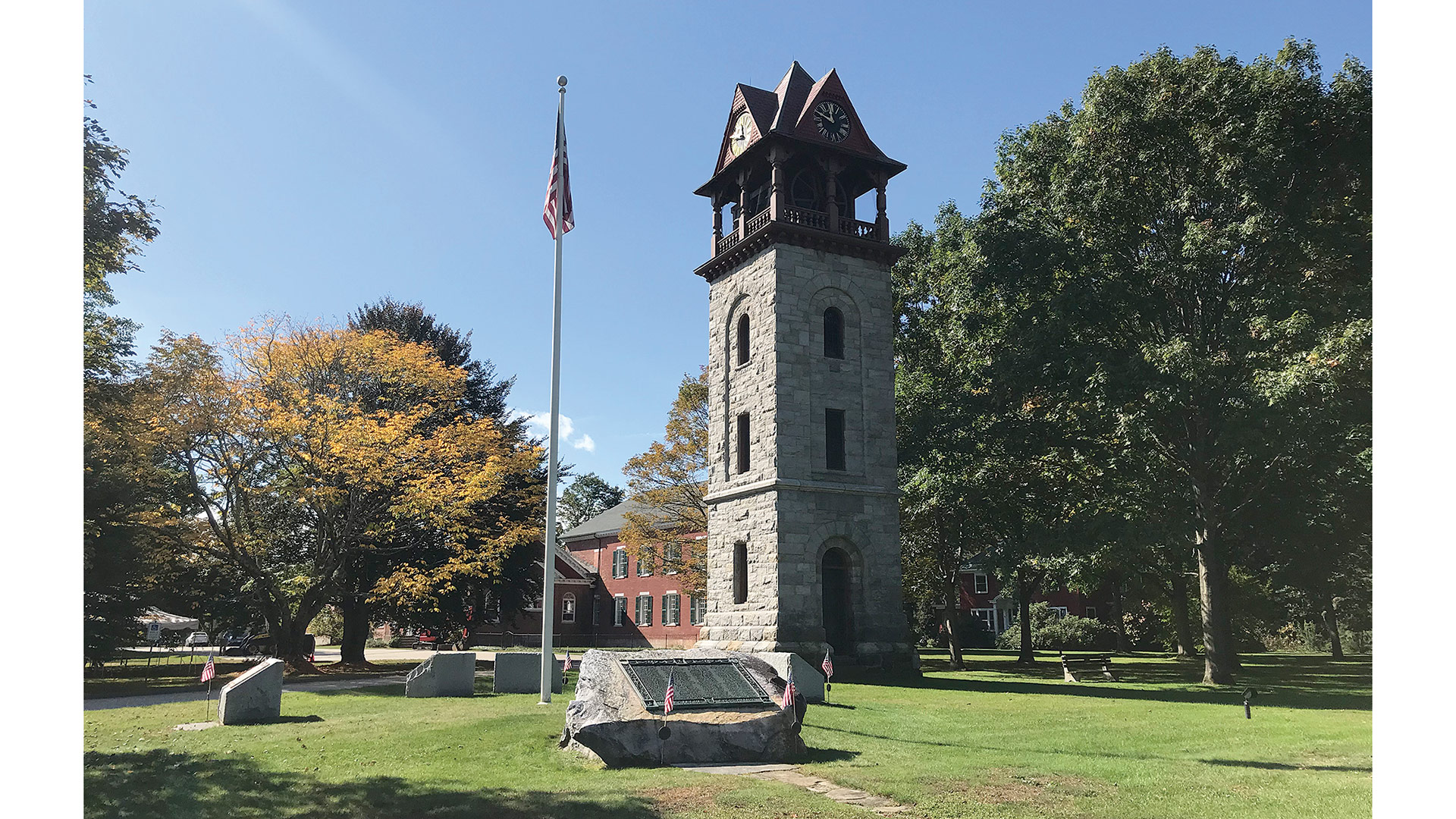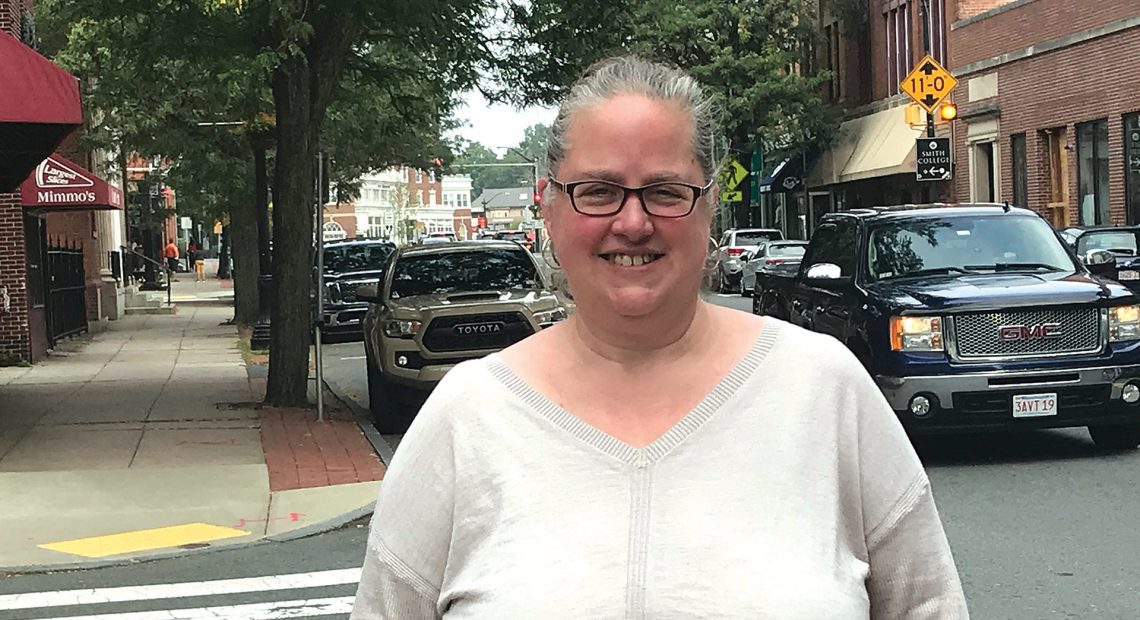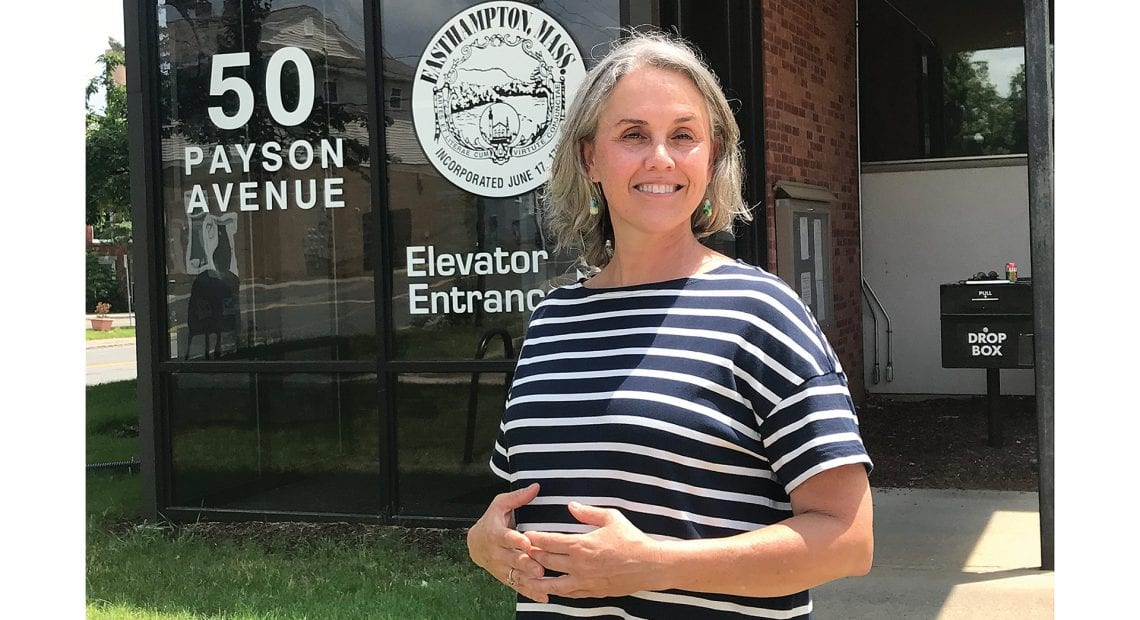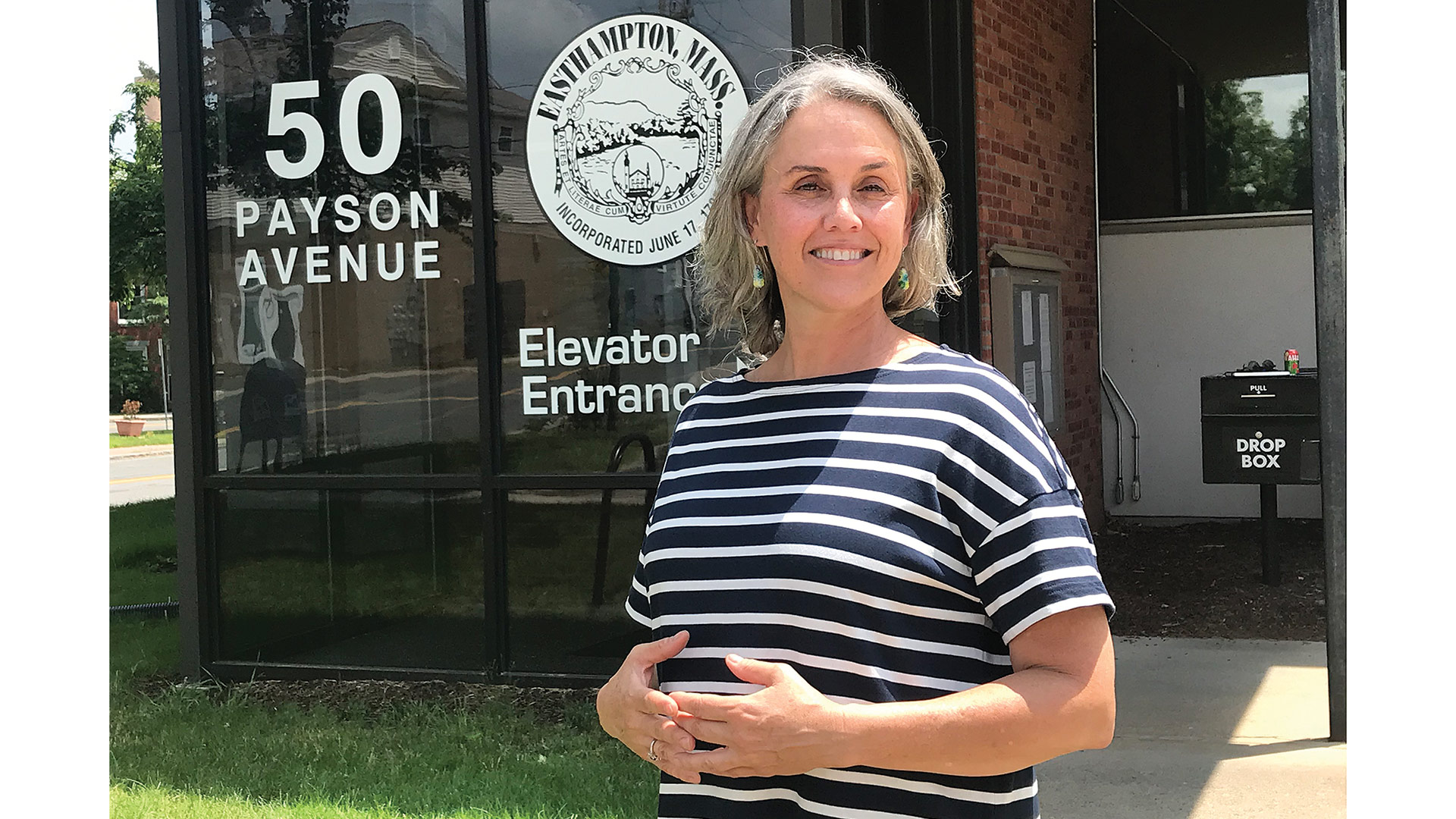Community Spotlight
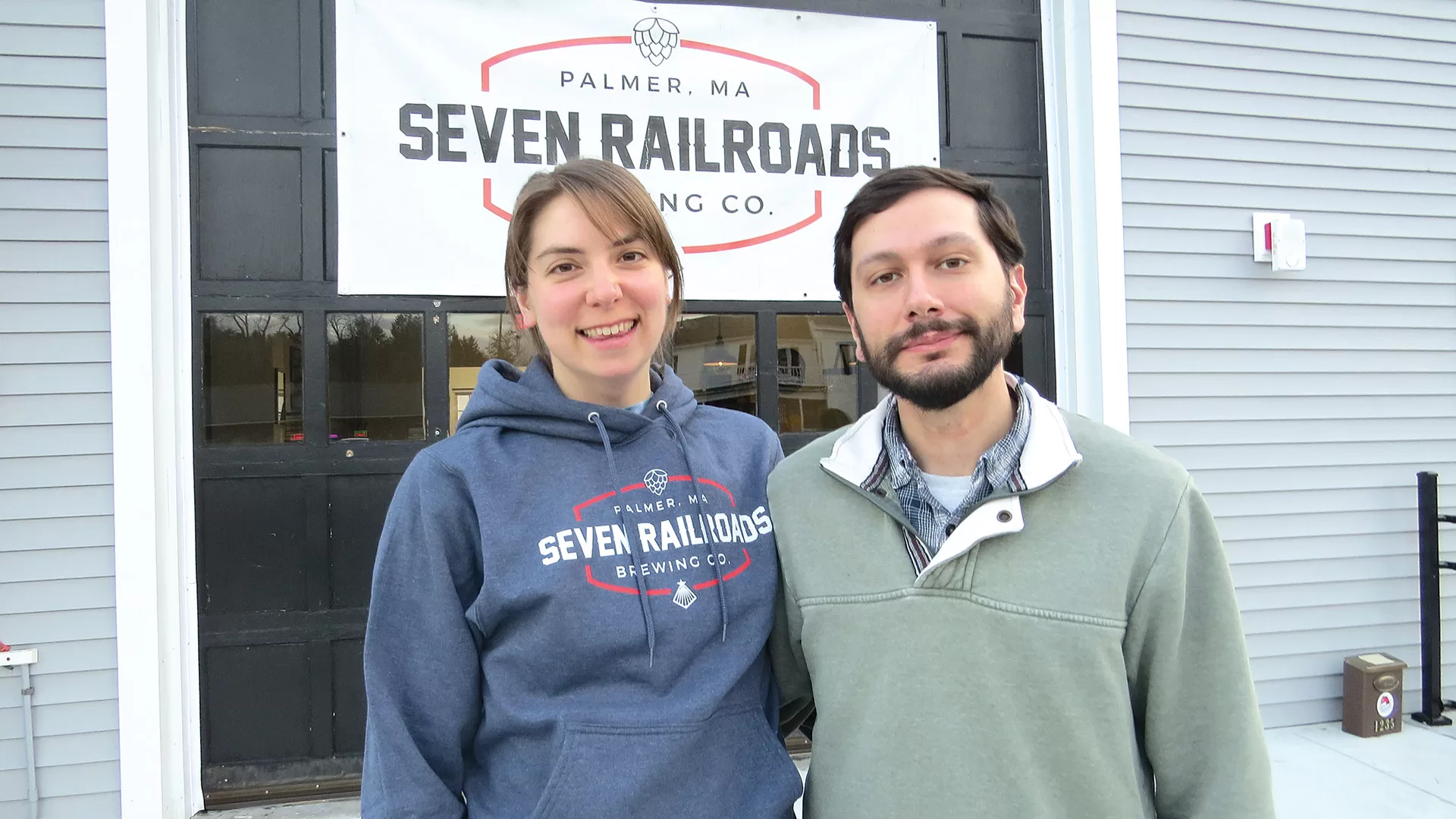
Rachel Rosenbloom and her husband, Michael Bedrosian, named their brewery Seven Railroads in a nod to Palmer’s rich rail history.
Palmer is known to many as the Town of Seven Railroads, a nod to a very rich history as a transit center.
Indeed, several passenger and freight rail lines ran though the community at one time, most notably the Boston & Albany, which ran east-west between the two cities, and the Central Vermont, which ran north-south from the Canadian border to New London, Conn., with those two railroads sharing Union Station, an elegant structure designed by noted architect Henry Hobson Richardson.
Today, rail is still part of the town’s character, with five rail lines still running through the community, a renovated Union Station now serving as home to the popular Steaming Tender restaurant, and a new brewery — called, appropriately enough, Seven Railroads Brewing — opening its doors on Route 20 just a few weeks ago.
Passenger rail service in Palmer ceased back in the 1970s, when Amtrak closed Palmer’s station, leaving few who can recall first-hand that important aspect of the town’s history — and psyche.
But all that could be changing in the not-too-distant future.
The Massachusetts Department of Transportation has recommended Palmer as a stop on the proposed east-west passenger rail service, and is now in the process of studying and eventually selecting a site for a new rail station.
There is no timetable for when that service will start, but the DOT’s backing of Palmer as a stop is generating high levels of excitement and anticipation in the community, said Town Planner Heidi Mannarino, noting that she is already seeing more interest in the town and some of its available real estate from the development community. Overall, she and others are enthusiastic about what a rail stop will mean for the existing business community and ongoing efforts to grow it.
“I’ve already seen more people purchase land and start to eyeball Palmer,” she said, “because once you hear that news … it’s just so valuable to have that kind of public transportation available.
“Rail will be a great boost for economic development in downtown Palmer,” she went on. “It’s going to bring a lot of business in, and I think it’s going to bridge some econimic gaps between Springfield and Boston.”
Indeed, passenger rail service is expected to change the overall profile of this community, situated roughly halfway between Springfield and Worcester off exit 63 (formerly exit 8) of the Mass Pike. Palmer’s location has always been considered close to the state’s second- and third-largest cities, but, in the eyes of some economic-development leaders, not close enough.
Rail will bring the community closer to both — and also closer to Boston and all of Eastern Mass., said John Latour, Palmer’s director of Community Development, noting that the proposed service will enable people to live in Palmer and work in Boston and surrounding communities, adding that remote work has already brought some to the town as they seek to escape the sky-high prices for real estate, childcare, and everything else in Greater Boston. And rail service should bring more.
“Whether they’re working fully remote or going to the office a few days a week, it still makes sense for people to live in a community like Palmer and commute,” he said, adding that, while some already commute from Palmer to Greater Boston, rail service will be a better, safer alternative that will enable people to work while they commute.
East-west rail is easily the biggest developing story in Palmer, but there are others, said Mannarino, listing early-stage construction of a new strip mall near the Big Y off the turnpike exit, one that is expected to bring a Starbucks, Jersey Mike’s, and other major brands to the community; the new brewery (much more on that in a bit); and ongoing efforts to repurpose two closed schools, Thorndike School and Converse School, for housing — a need in this community as in most all cities and towns in the 413 and other parts of the state.
“There’s a deficiency of affordable housing in most communiies, and Palmer is no exception,” she said, adding that the need for senior housing is most acute, and one that could be eased by converting the two schools for that use.
For this, the latest installment of its Community Spotlight series, BusinessWest takes an in-depth look at Palmer and how several initiatives, and especially east-west rail, are seemingly on track.
Coming to a Head
They call it ‘Old Exit 8.’
That’s the name that Rachel Rosenbloom and her husband, Michael Bedrosian, owners of Seven Railroads Brewery, gave to a New England IPA that has become one of their most popular offerings.
It comes complete with a tagline — “We don’t know what exit nunber we are anymore, and we don’t care to find out” — and Rosenbloom said the brew, and its tagline, speak to how this brewery operation, unlike most of the others in this region, is mostly about a town and its people. And they are among them, living just a few minutes from their taproom.
“It was designed to be a place where people, and especially those from Palmer, can come and hang out,” she said, adding that, in the few weeks it has been open, it has become just that.
For Rosenbloom, who by day is head brewer at Fort Hill Brewery in Easthampton (although not for much longer as she works toward making her venture a full-time endeavor), and Bedrosian, Seven Railroads is a dream now close to three years in the making.
It took that long to find a location (a building on Route 20 that was once home to a trucking operation and other businesses and actually has rail tracks running behind it), secure the necessary permits and licenses, build out the space, and open the doors.
“It was a long journey, but it was well worth it,” she said, not once but several times, noting that the brewery is off to a solid start, drawing a mix of locals, students from the nearby Five Colleges, and a number of other brewers who have come in to welcome the latest addition to the region’s growing portfolio of craft breweries.
In most respects, Roenbloom said, all that competition is good — for the region, for beer lovers, and even the various breweries, because it creates a critical mass that makes the region a craft-beer destination.
Meanwhile, Seven Railroads is on an island of sorts, she went on, adding that it is the only brewery in Palmer — in fact, the only one within 25 minutes of the center of the community — giving it some breathing room.
Thus far, things are going pretty much according to the business plan, said Rosenbloom, noting that Seven Railroads has become part of a growing restaurant and hospitality scene in Palmer, with many patrons stopping in before or after visiting one of several restaurants in town, including the Steaming Tender, Figlio’s, Tables, Day and Night Diner, and others. And she expects that rail service might bring more additions to that list and, overall, more people to Palmer.
Next Stop: Palmer
Indeed, while the rail stop is expected to encourage people to live in Palmer and perhaps work in Boston, it could also bring more people from Boston and other parts of the state to this community and those around it, said Lavoie, adding that, while the turnpike already brings visitors to exit 63, rail service will bring even more convenience.
Elaborating, he noted that students at UMass Amherst and the other Five Colleges could take the east-west rail service to Palmer and then take a bus or an Uber to those institutions.
“There will be more connectivity,” he said, adding that this quality will bring many benefits, especially a greater ability to commute from Palmer and surrounding towns to other parts of the state.
“You can take the Mass Pike, but it will be more conducive for more people to take the rail and not risk delays or inclement weather; it’s a safer mode of travel,” Lavoie told BusinessWest, adding that professionals can commute and work at the same time.
Meawhile, at a time when fewer young people are married to the notion of owning and maintaining a car, a community with a rail stop, and especially one with home prices several notches (at least for now) below those in Eastern Mass., moves toward the top of their places to live, work, or both.
“In essence, you’re pushing the bedroom community of the business hub of Massachusetts [Boston] further west, and anything that’s occuring in the Springfield area, you’re pushing that bedroom community further east,” he explained, adding that rail can only help amplify this trend.
Mannarino agreed, noting that one of the next steps in the process of making rail a reality in Palmer is finding a site for a new station. A committee of town officials and residents is being assembled to work with Andy Koziol, the recently named director of East-West Rail, and MassDOT on that assignment.
Several sites have been proposed, Mannarino said, listing the land near the Steaming Tender and DPW property off Water Street among the contenders. “The goal is to choose the one that’s most feasible and makes the most sense. Each of the sites has caveats.”
There is no timetable yet for east-west rail or Palmer’s stop on this highly anticipated transit initiative, and residents and town officials understand that it will likely be several years before the first trains stop in town. But the general consensus is that, after years of lobbying and pushing for this facility, it is now becoming real, and the question, increasingly, isn’t if, but when.
That means this town with a deep rail past is set to write an exciting new chapter in that history.







